News
Shoko MASUNAGA : Somewhere Here, Near There
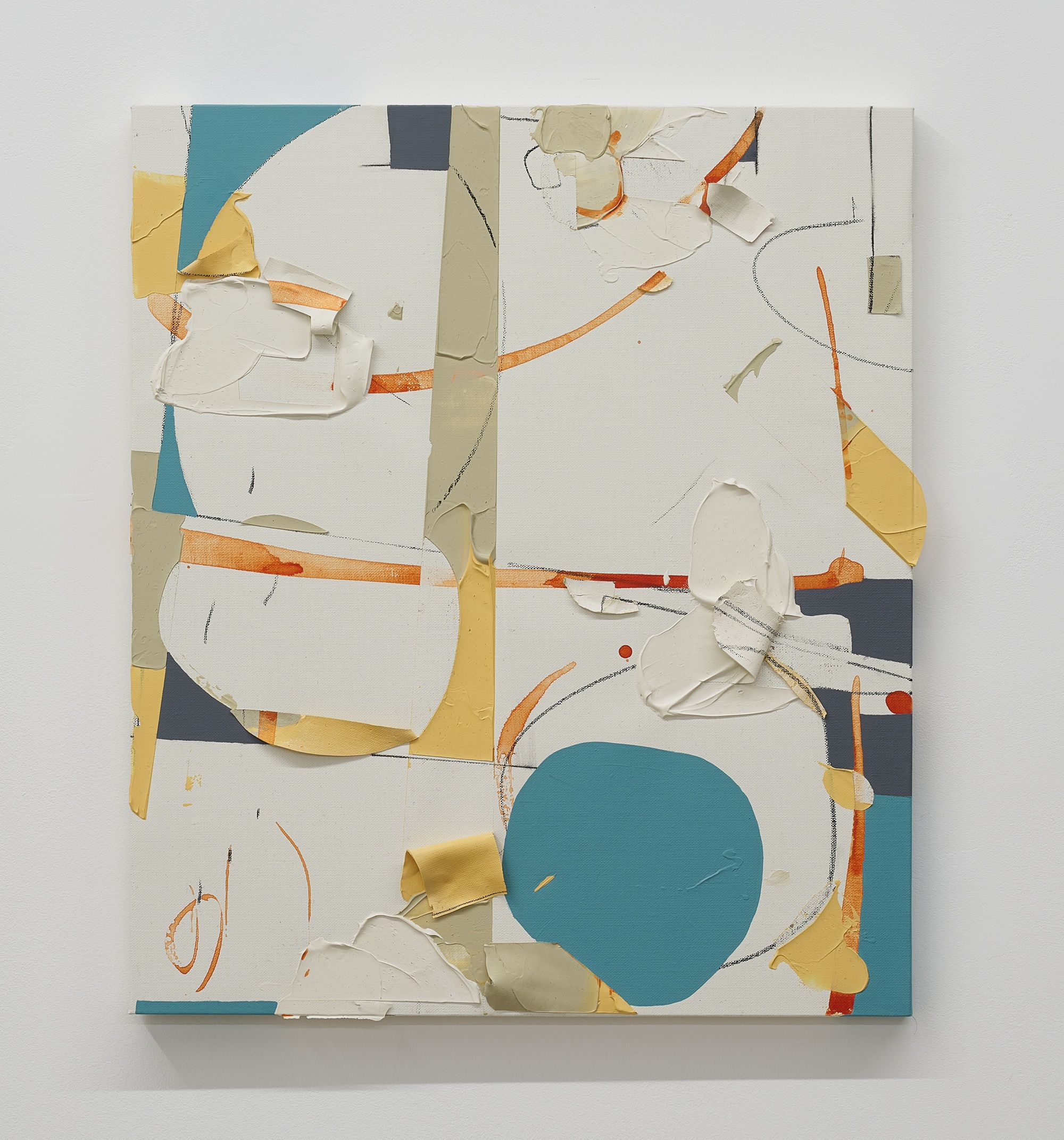
Story About the Color Called Blue
2025
Acrylic, dermatograph on canvas
53 x 46.3 x 3.8 cm
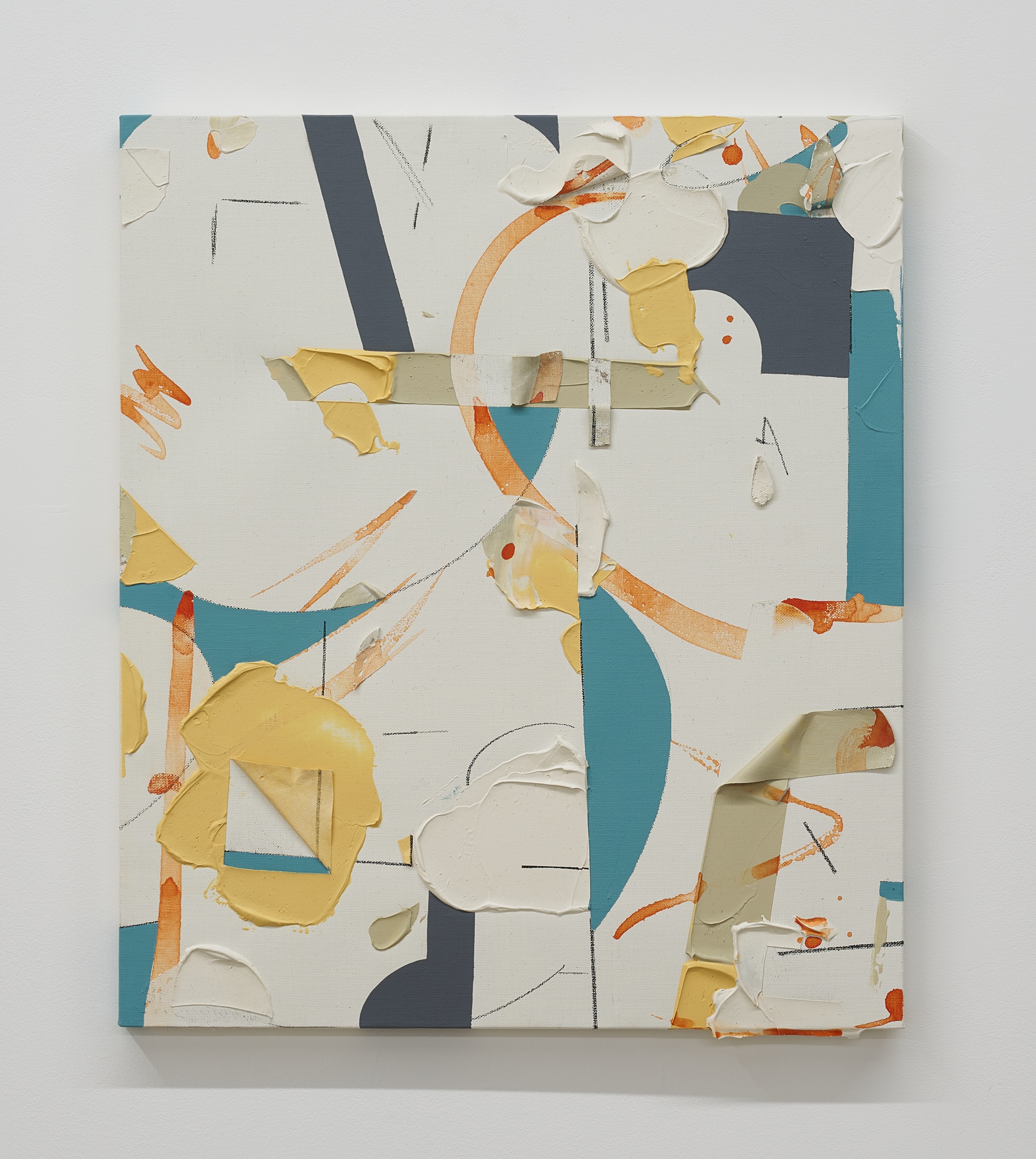
A Gusty Wind Occasionally Blows Around Here
2025
Acrylic, dermatograph on canvas
53.8 x 45.5 x 3 cm
Maki Fine Arts is pleased to present Somewhere Here, Near There, Shoko Masunaga’s second solo exhibition held at the gallery. The exhibition will open on March 22 (Sat) and run until April 20 (Sun).
The fifteen or so new creations showcased at the exhibition are considered the descendant and development of the works from the artist’s 2023 solo show What Comes After the Beyond (Maki Fine Arts). The paintings, produced by peeling and folding fragments of paint “membranes” covering the canvas, can be described as formative. Paint fragments, freed from the confines of the support structure, make dynamic movements, capturing the moments where the front and back, and inside and outside, intersect while creating a tense surface. In the production phase, the pieces are not handled separately, but several of them are juxtaposed tightly. Their combined surface is painted across, then the pieces are rotated individually, joined again, and painted. The action is repeated, resulting in images (lines and color fields) that are partially connected, with traces of detached segments found on the surfaces of other pieces. Such continuous connection is what characterizes the series of works as a whole. Until now, Masunaga has created paintings by following a self-imposed rule of starting with lines and then applying colors. Some of the new works deliberately reverse this order and execute fresh gestures.
—
Shoko MASUNAGA
Born 1980 in Osaka, Japan. Her creative process originates from paintings and utilizes a variety of techniques. By focusing on the connections to the surrounding environment and space, her works become fluid and interchangeable.
Recent shows include Abstractions – from a certain point – (group, CADAN Yurakucho, 2024), Ginza Curator’s Room #005 Angel’s Perch (group, Shibunkaku Ginza, 2023), What Comes After the Beyond (solo, Maki Fine Arts, 2023), editing (solo, nidi Gallery,2022), replace (solo, LOKO Gallery, 2021).
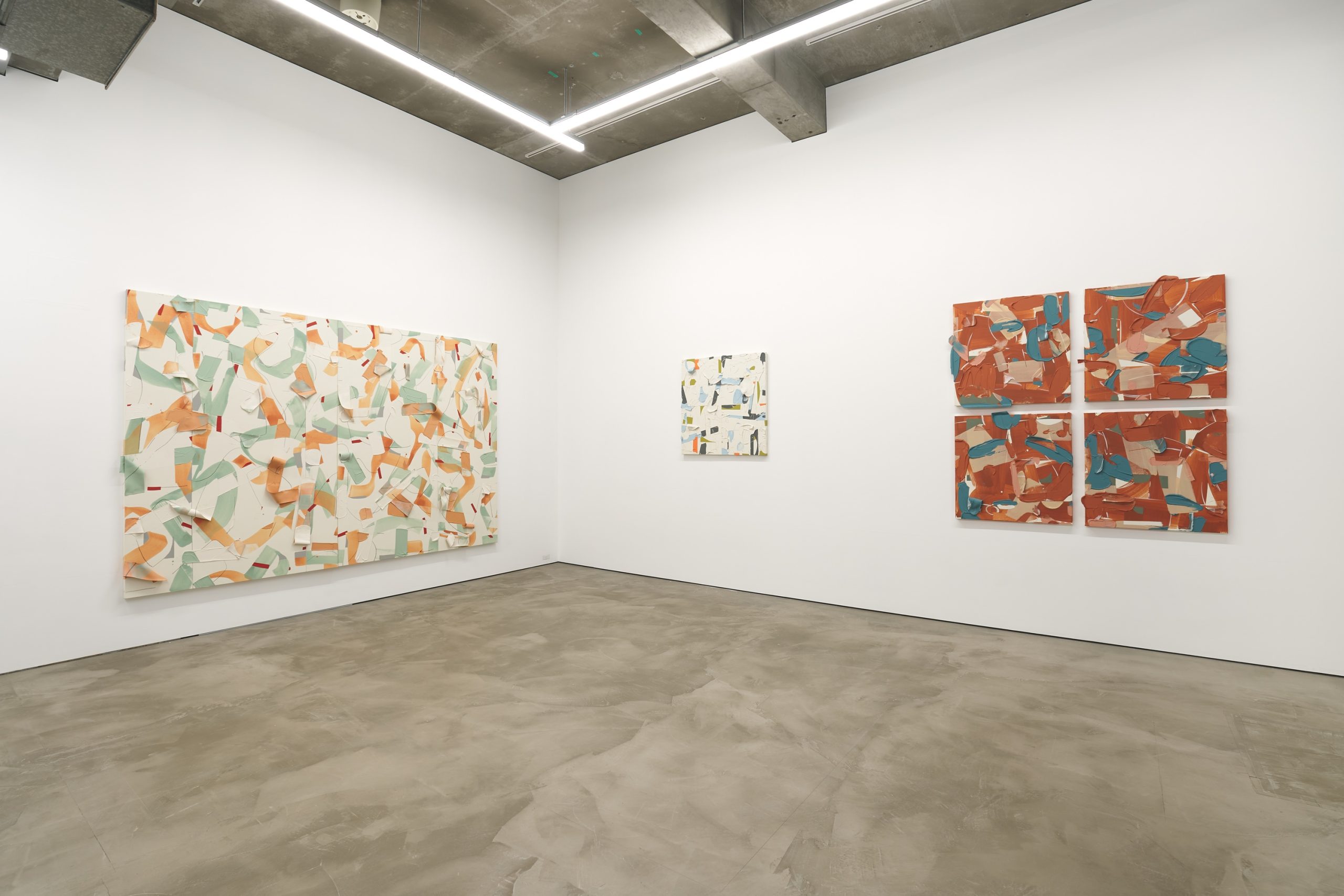
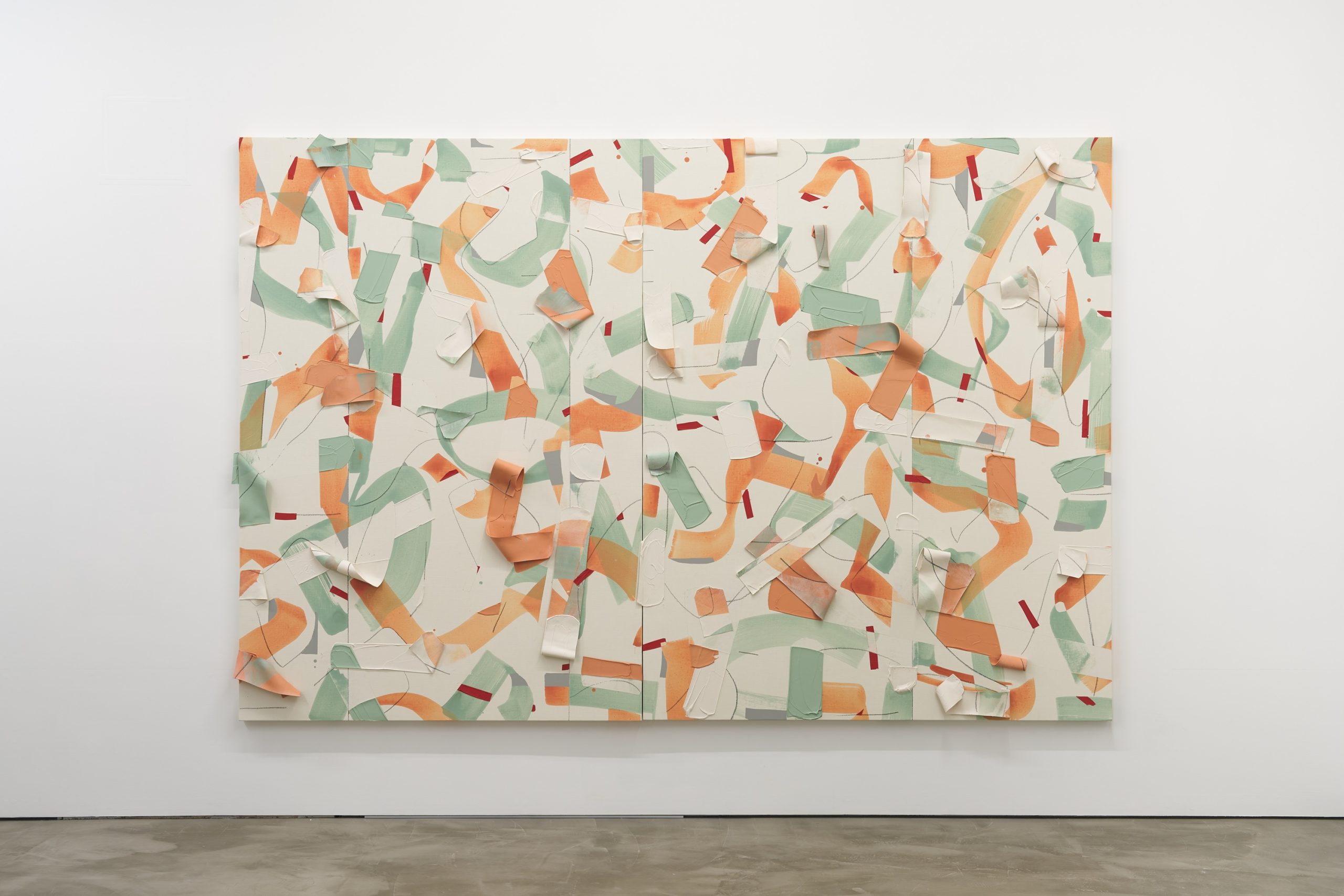
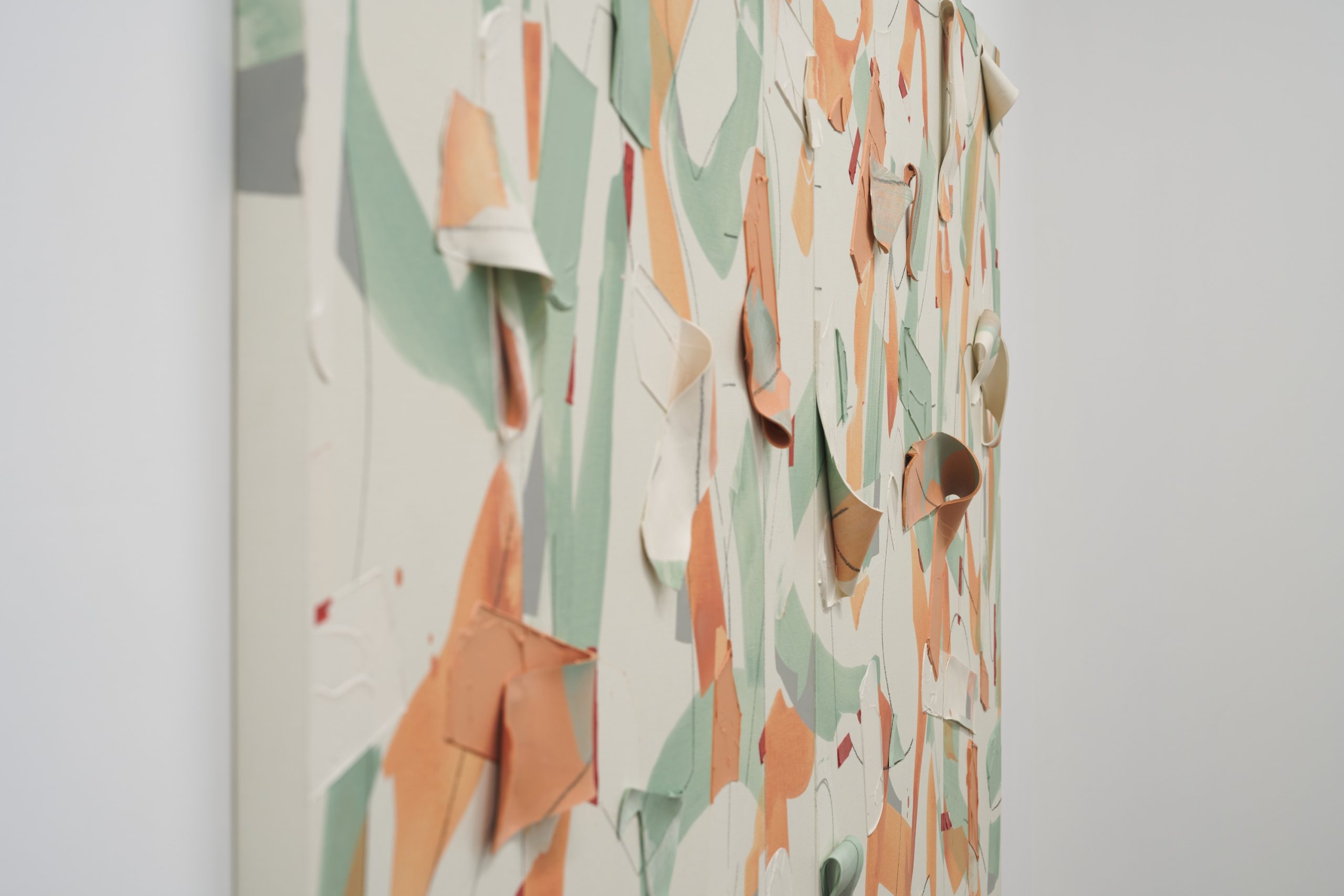
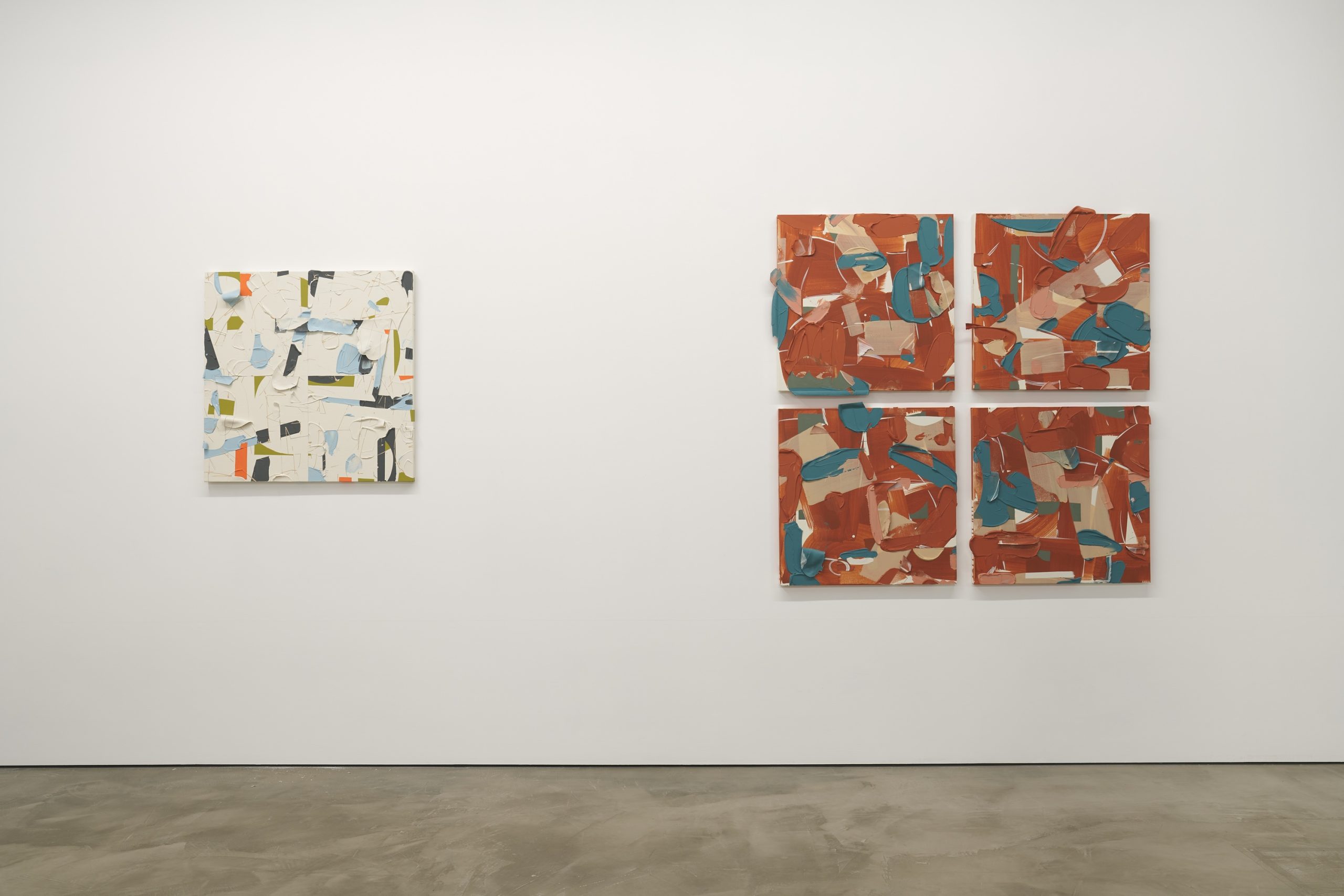
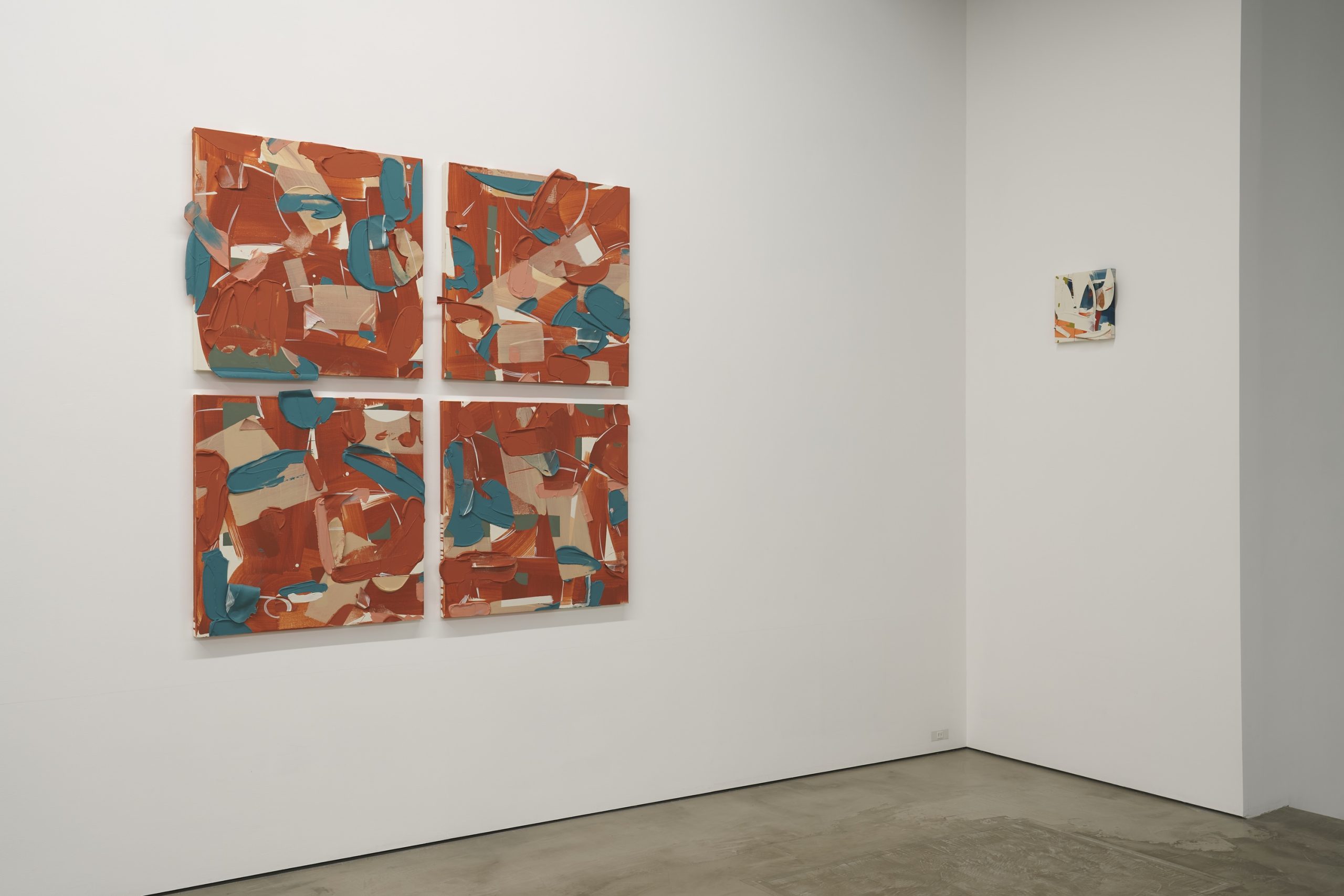
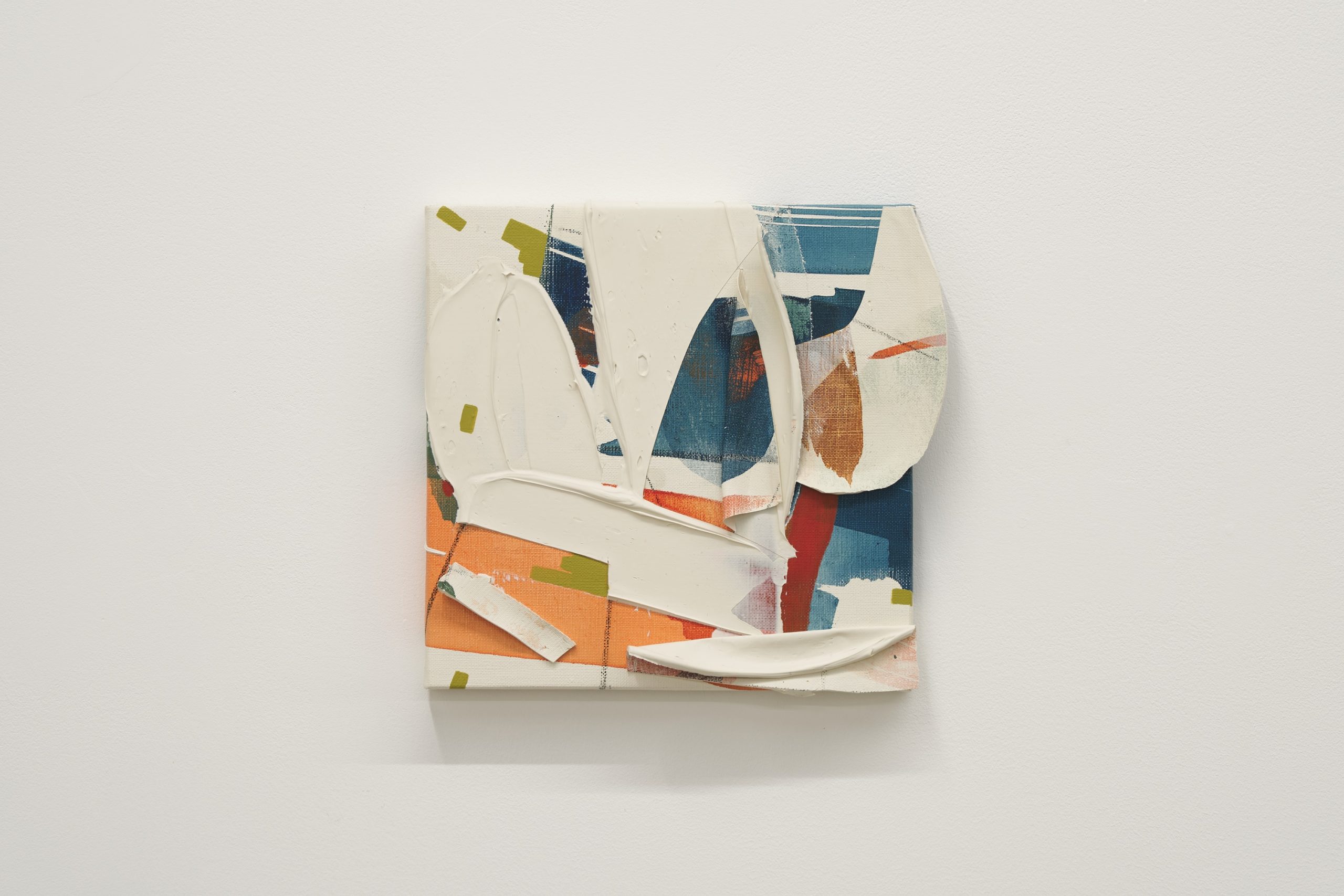
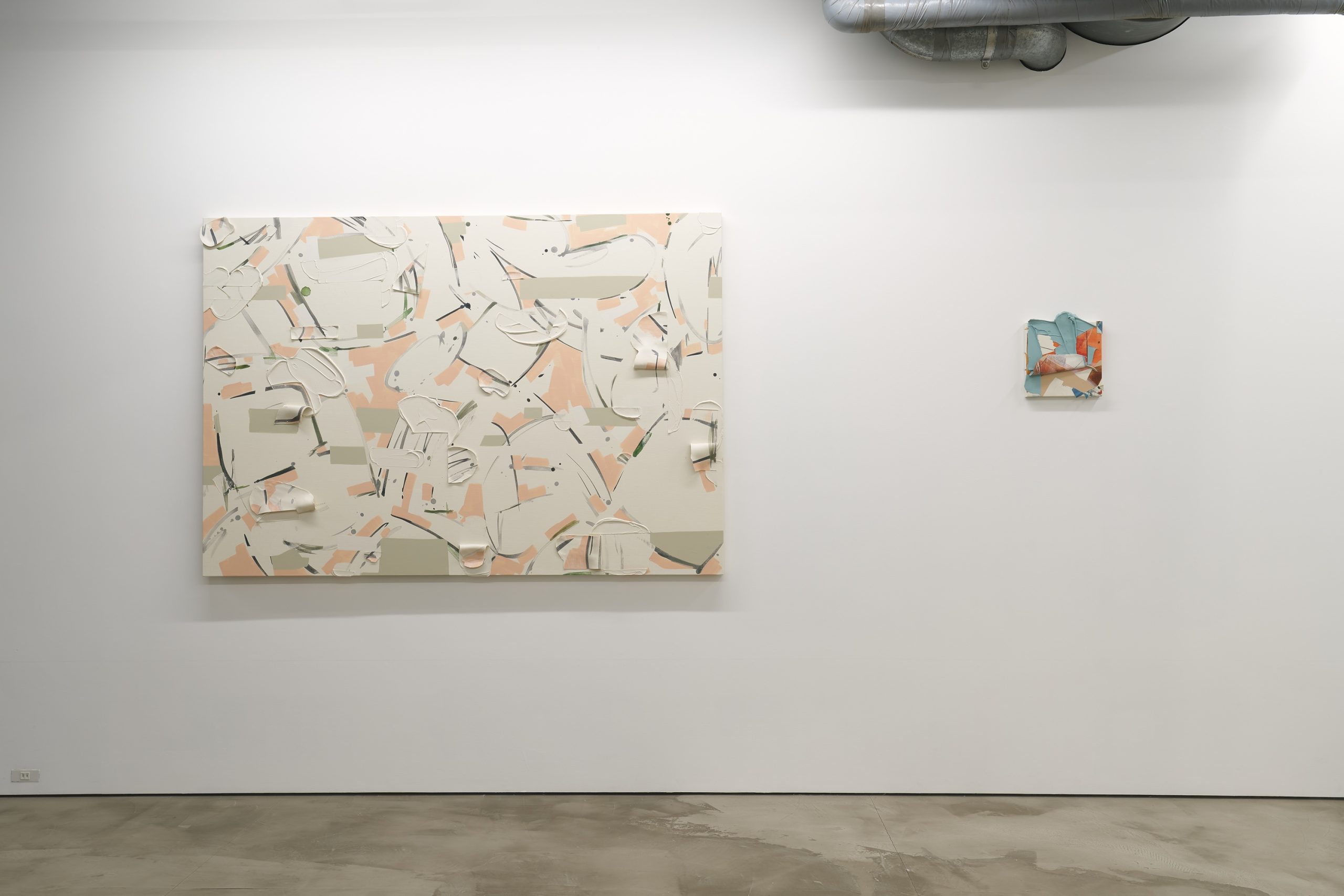
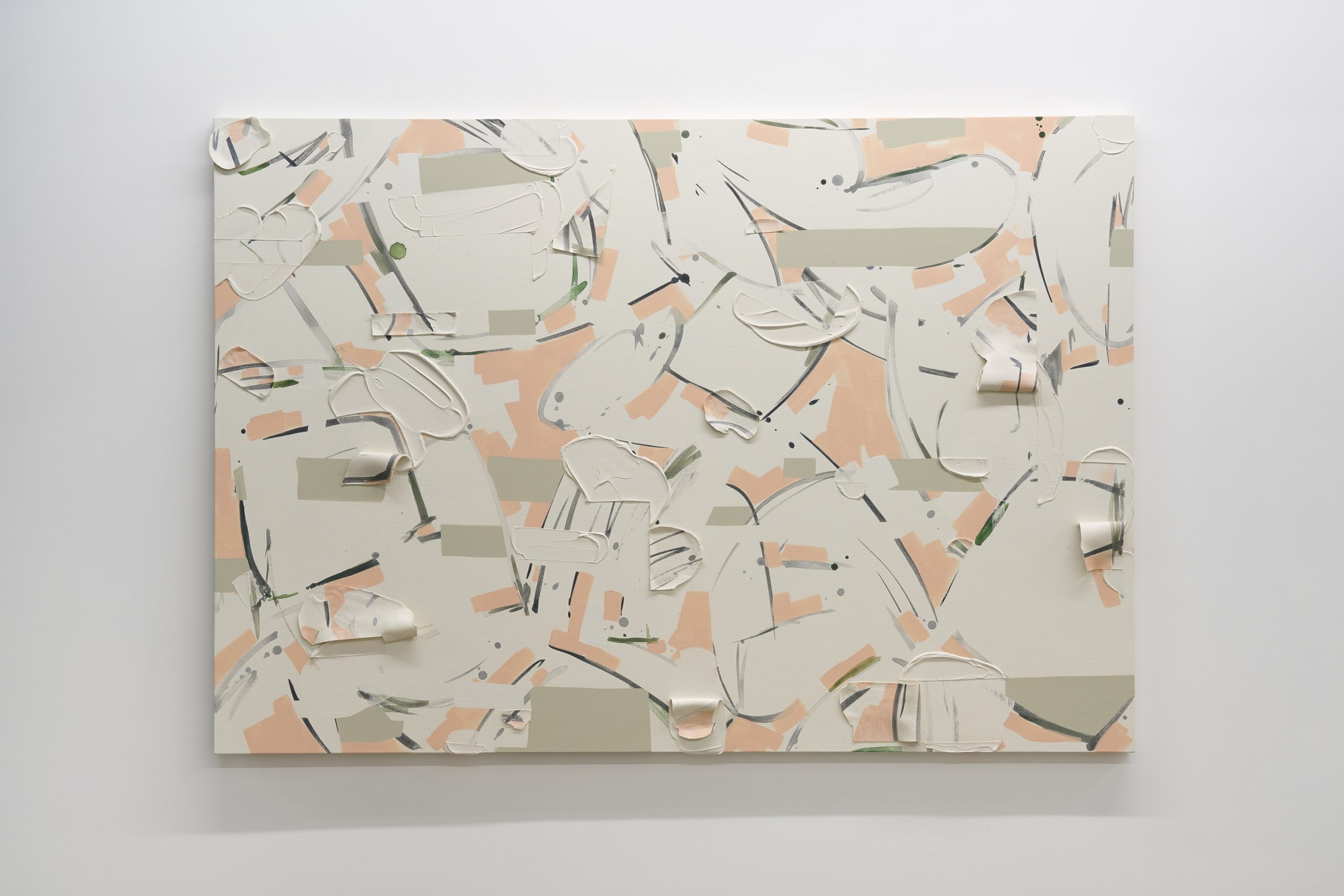
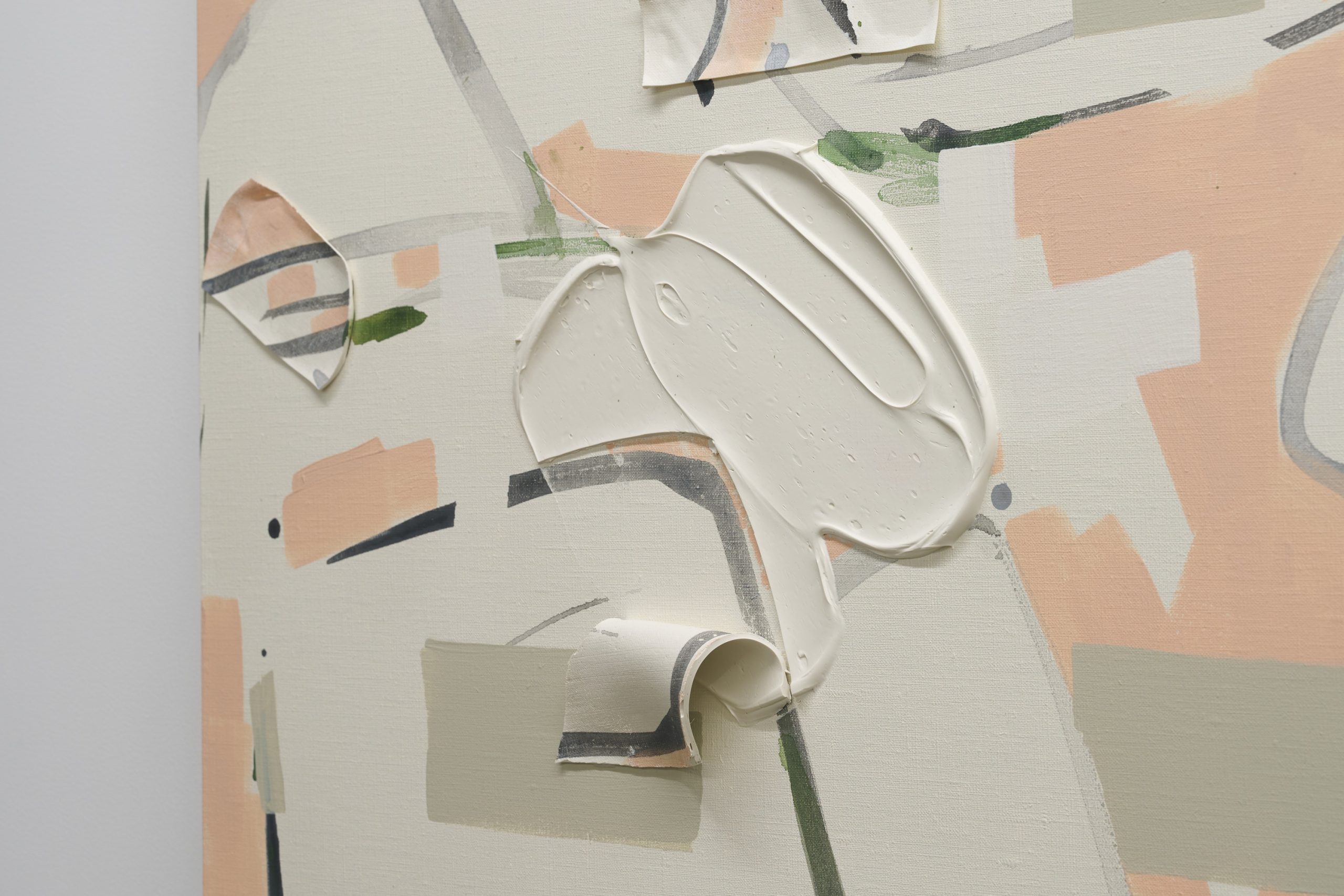
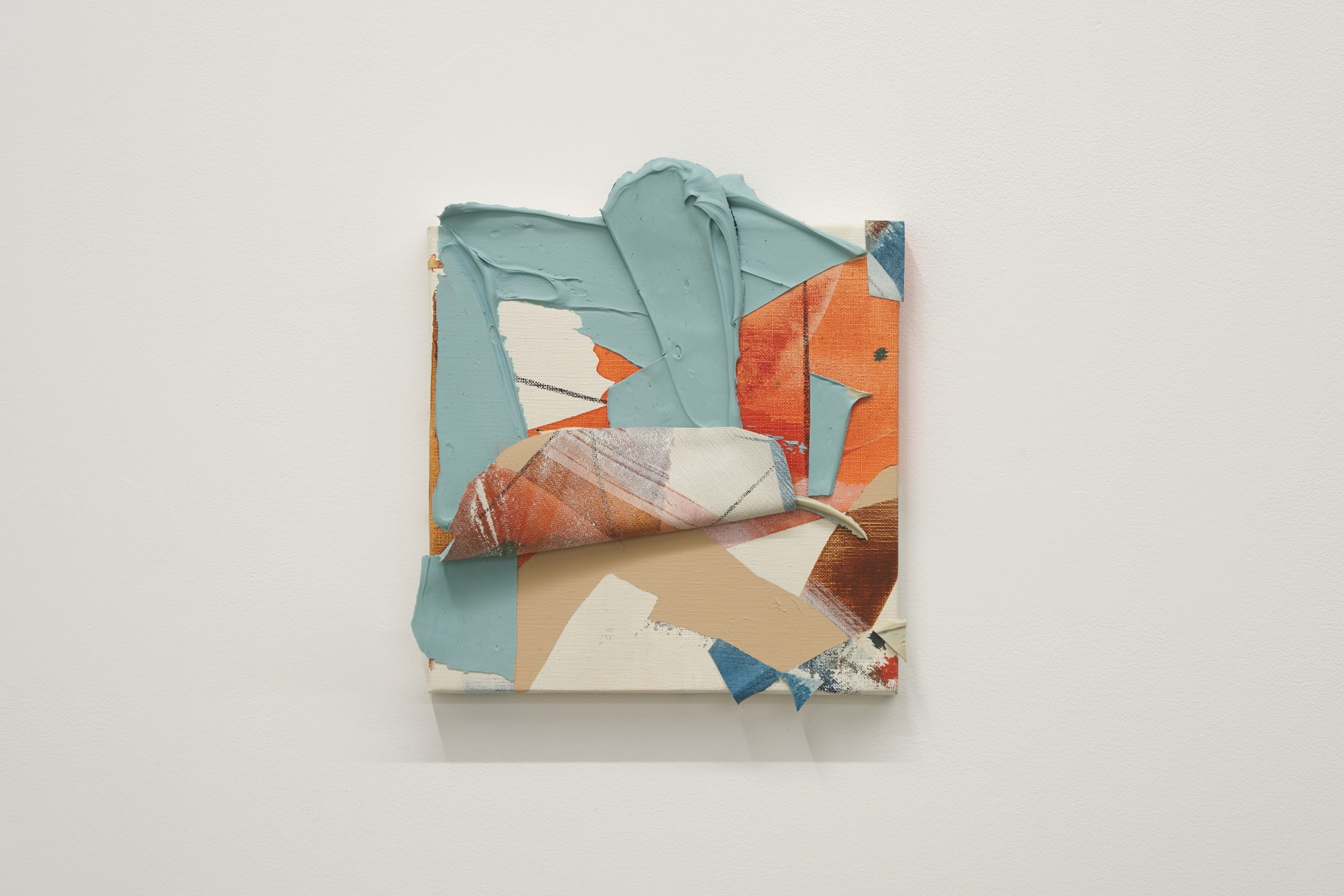
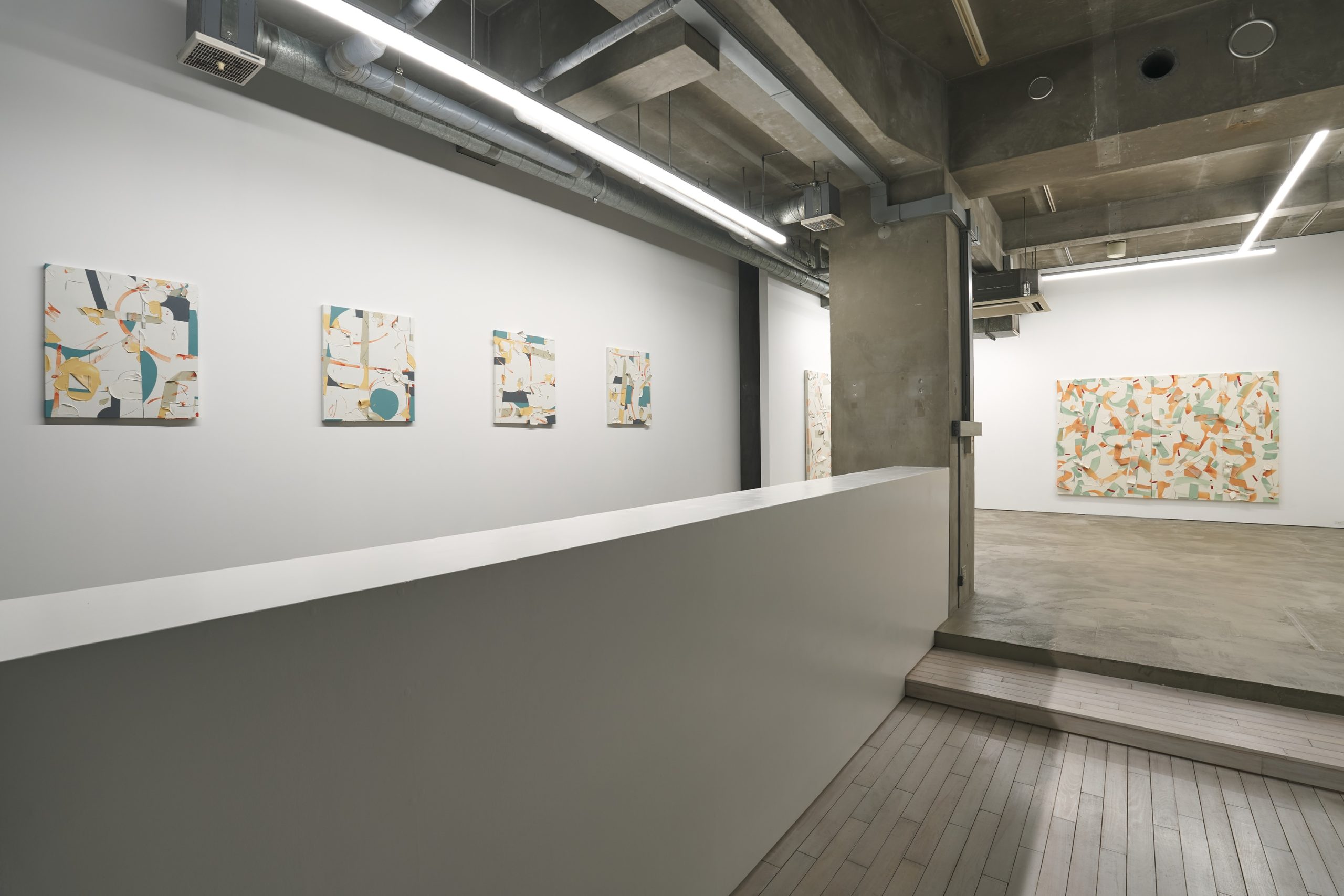
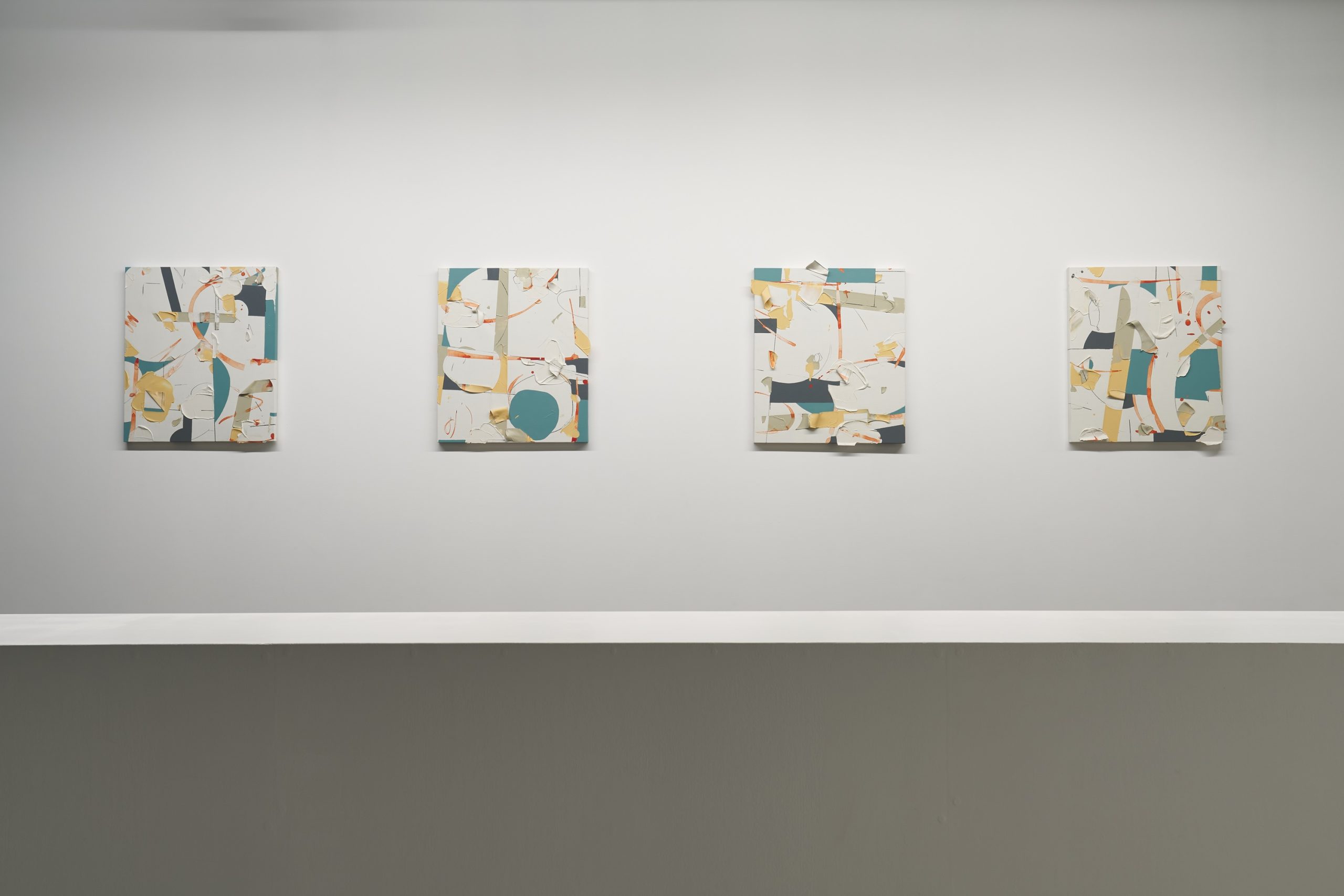

Abstractions – from a certain point –
Yasuko Toyoshima, Katsuhisa Sato, Fuminao Suenaga, Shoko Masunaga
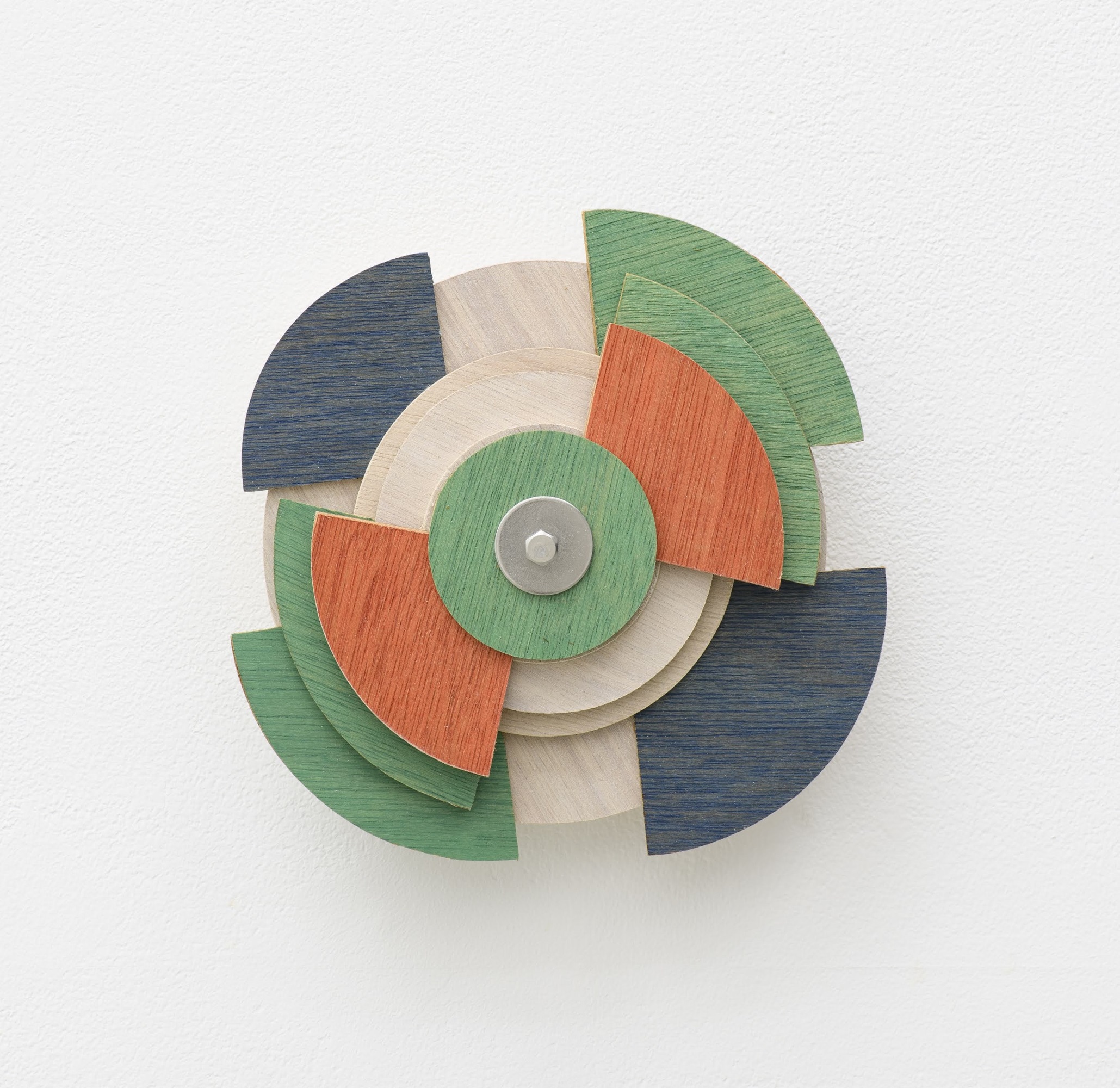
The Copernican Theory_2020 Khanun
2020
Wood, natural paint, bolt and nut, flat washer
17.5 x 17.5 x 4.9 cm
Yasuko TOYOSHIMA
By taking a critical look at institutions and systems found in everyday life and in our society, Toyoshima focuses on creating works that shed light on the patterns found in human thought.
Born in 1967, Saitama, Japan. Toyoshima received her MFA from Tokyo University of the Arts. Recent shows include Origination Method (solo, Museum of Contemporary Art Tokyo, 2023-24), Group Show – Yasuko Toyoshima, Ryosuke Ogino, Makoto Ito (group, 2023-24, Maki Fine Arts), Enclosure(solo, M gallery, 2021), Alternating Current 2021(solo, Galleria Finarte, 2021), PUBLIC DEVICE – Symbolism and Permanence of Sculpture (group, The University Art Museum, Tokyo University of The Arts, Tokyo, 2020).
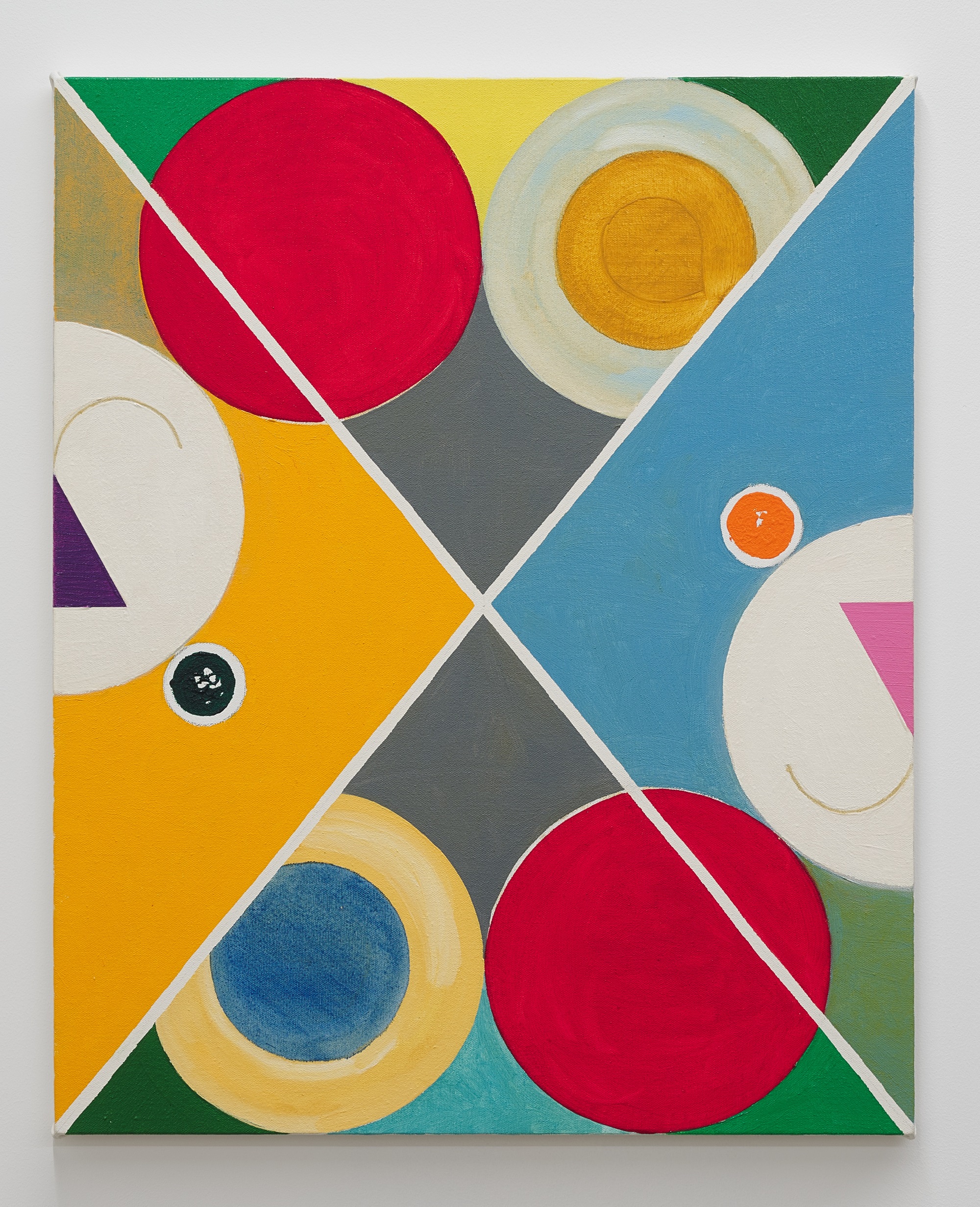
face to face
2019
Oil on canvas
65.2 x 53 cm
Katsuhisa SATO
Sato explores the relationship between color and form with humor, using the system and form of painting as his subject matter.
Born in 1973, Hiroshima, Japan. Sato received his MFA from Aichi Prefectural University of Fine Arts and Music. Recent shows include solo show (See Saw gallery+hibit, 2023), Same Thing (solo, SHINBI GALLERY, 2023), Insight 28 ”hang” (group, Yoshimi Arts, 2023), Collection Beginning – Multiverse / Cat (group, Toyota Municipal Museum of Art, 2023), SHOUONJI ART PROJECT 28th Katsuhisa Sato ”surface / ecafrus” (solo, SHOUONJI, 2021).
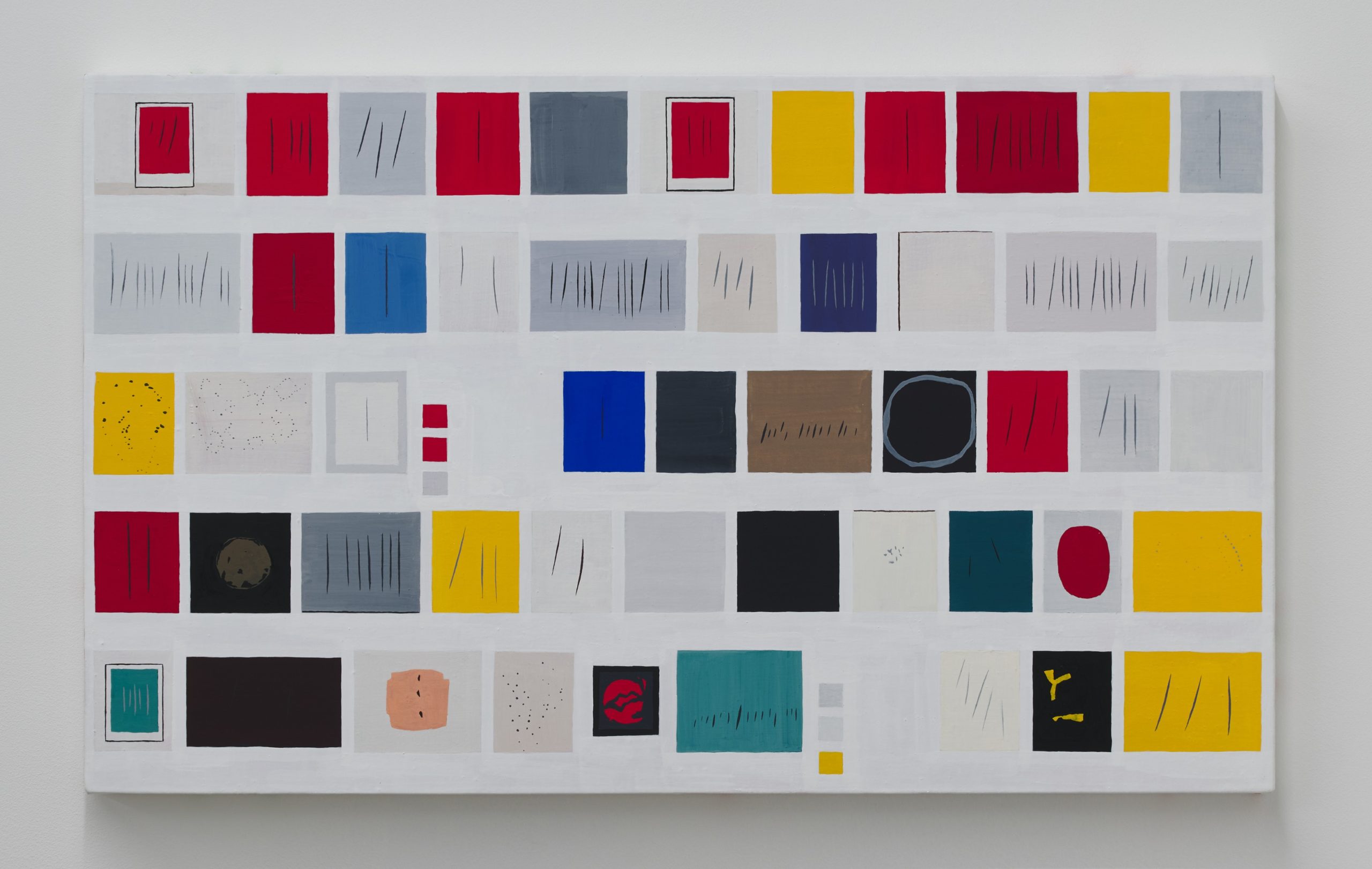
Search Results
2024
Acrylic, pigment on cotton, panel
42 x 69.5 cm
Fuminao SUENAGA
His paintings and three-dimensional works are based on visual subject matters inspired by elements relating to exhibition spaces and observations made during day-to-day activities.
Born in 1974, Yamaguchi, Japan. Suenaga graduated from Tokyo Zokei University in 1999 with a major in painting. Recent shows include UTSUSU (group, BOOK AND SONS, 2024), Textural Synthesis (group, Mitsukoshi Contemporary, 2024),Light paintings (solo, Maki Fine Arts, 2024), HEIHA (group, Gallery DEN5, 2023), Group Show – Yoshio Shirakawa | Fuminao Suenaga | Keisuke Shirota | Shunsuke Kano | Sean Micka (group, Maki Fine Arts, 2023).
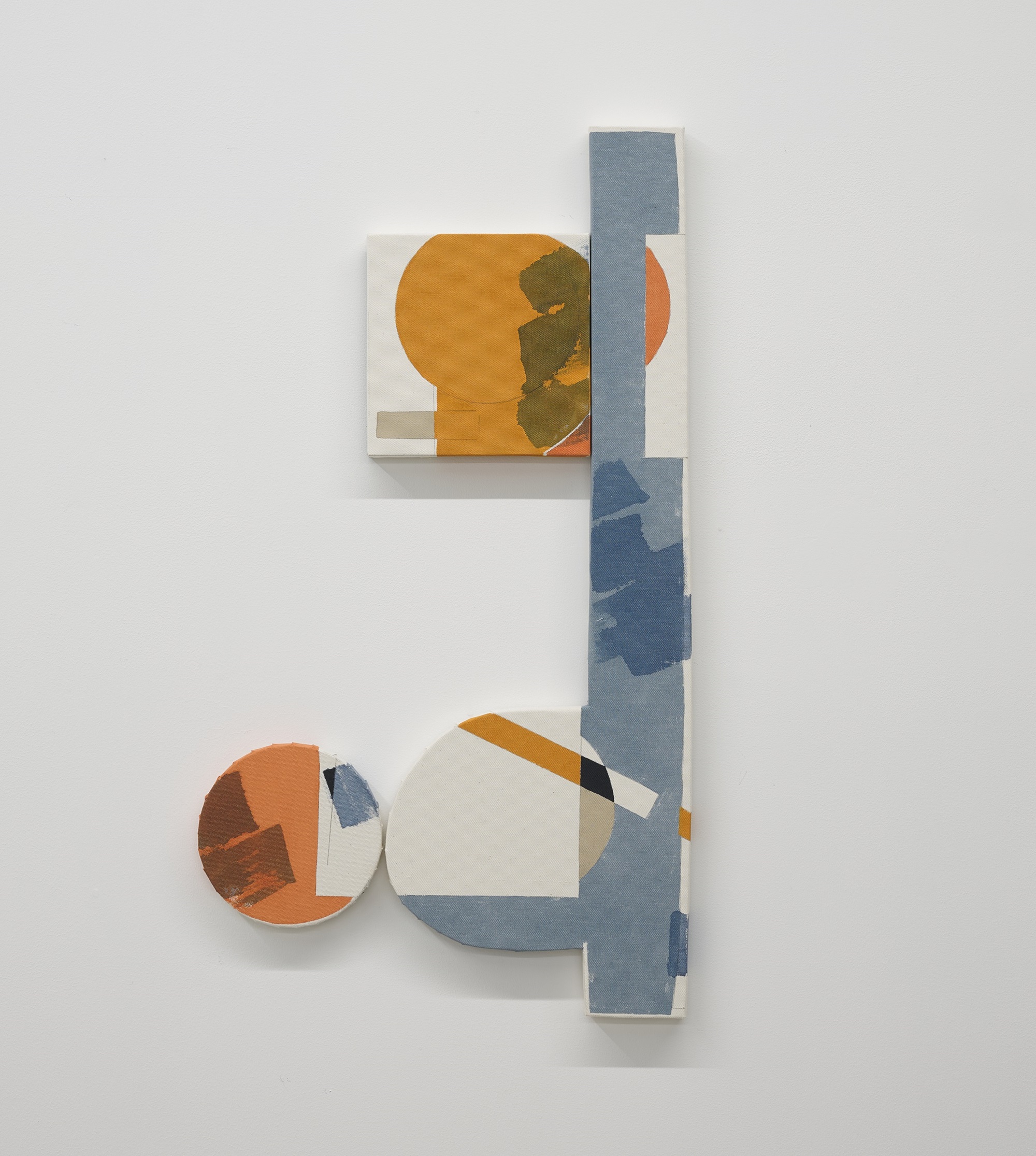
session4
2023
Panel, canvas, acrylic, pencil
72.5 x 40 x 2 cm
Shoko MASUNAGA
Her creative process originates from paintings and utilizes a variety of techniques. By focusing on the connections to the surrounding environment and space, her works become fluid and interchangeable.
Born 1980 in Osaka, Japan, Shoko Masunaga graduated from Seian Zokei Junion College in 2001 with a degree in painting. Recent shows include MEMORIES (group, CADAN Yurakucho, 2023), Ginza Curator’s Room #005 Angel’s Perch (group, Shibunkaku Ginza, 2023), What Comes After the Beyond (solo, Maki Fine Arts, 2023), editing (solo, nidi gallery,2022), replace (solo, LOKO Gallery, 2021).
—
Abstractions – from a certain point –
Yasuko Toyoshima, Katsuhisa Sato, Fuminao Suenaga, Shoko Masunaga
Date : August 6 – 25, 2024
Venue : CADAN Yurakucho / Kokusai Building 1F, 3-1-1 Marunouchi, Chiyoda-ku, Tokyo
Open : Tuesday – Friday 11AM-7PM / Saturday, Sunday and National Holidays 11AM – 5PM
Closed : Mondays and Days following National Holidays
link
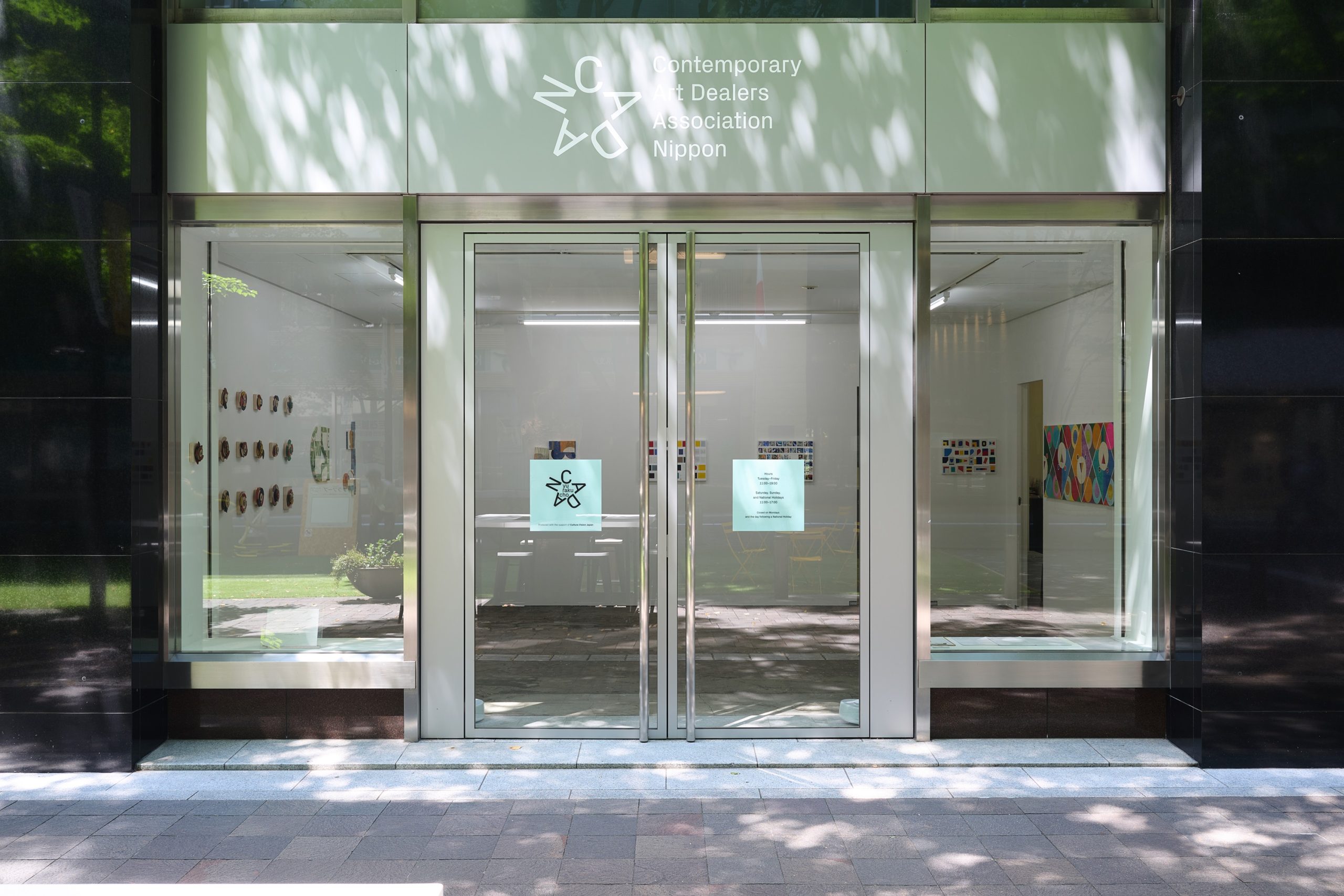
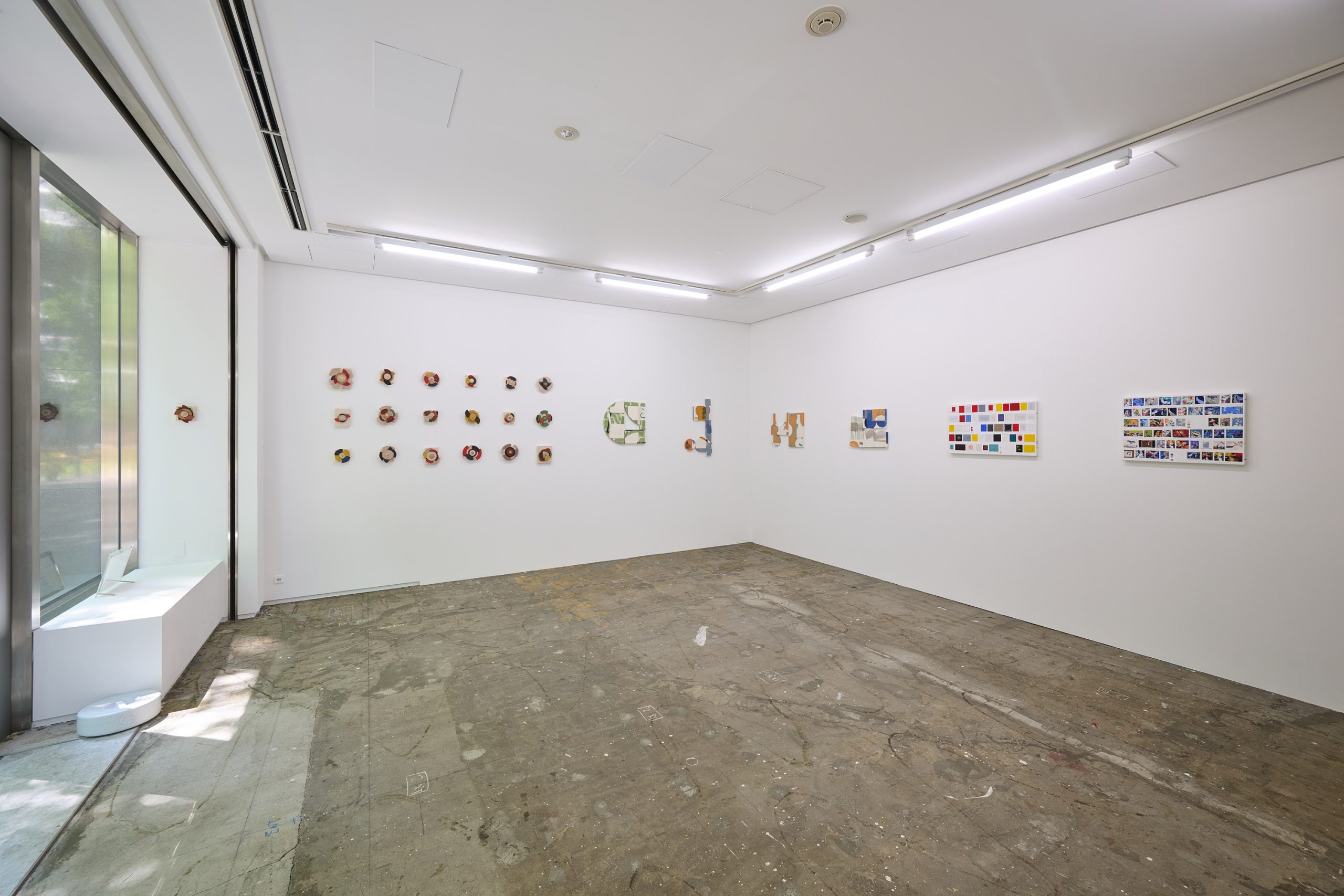
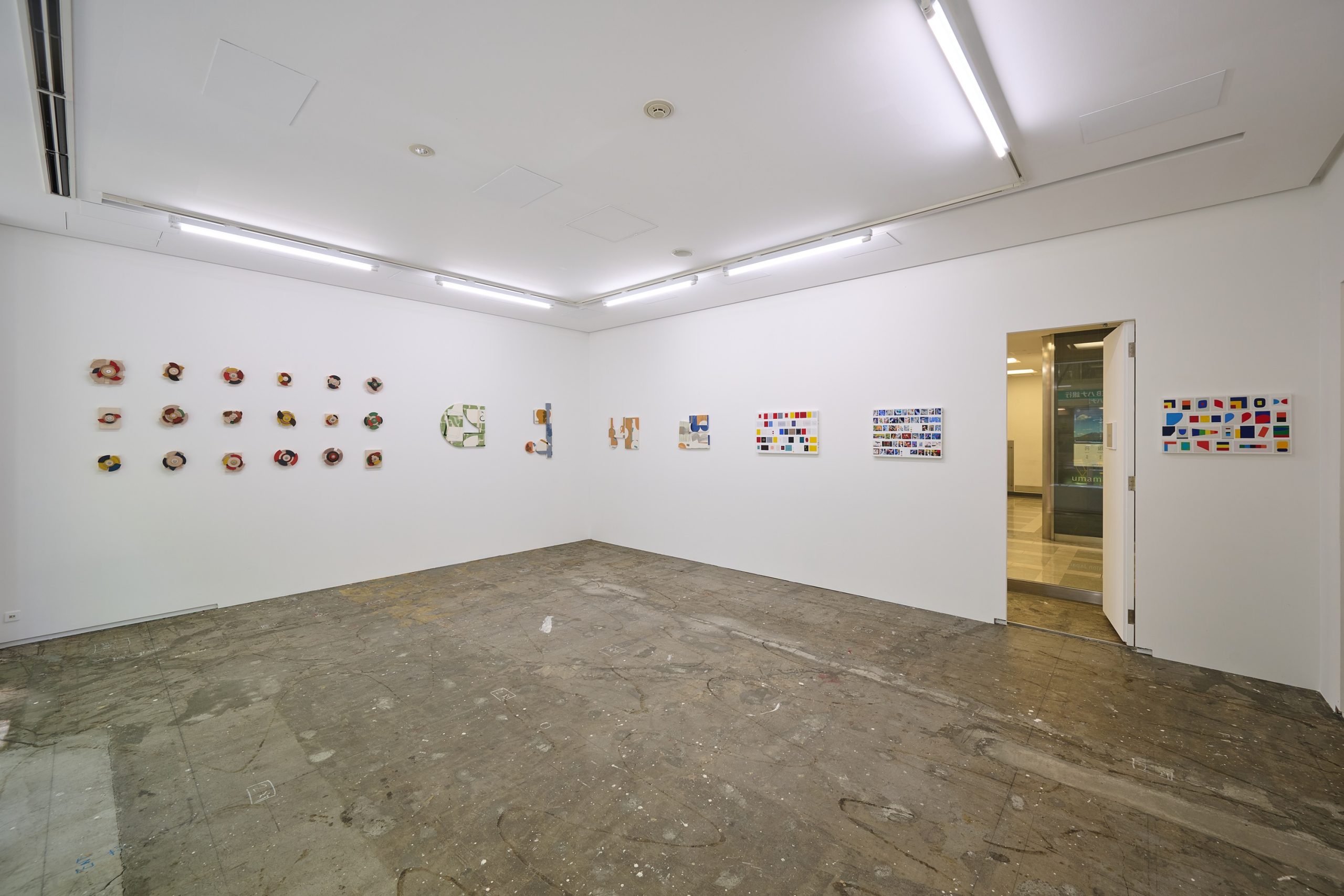
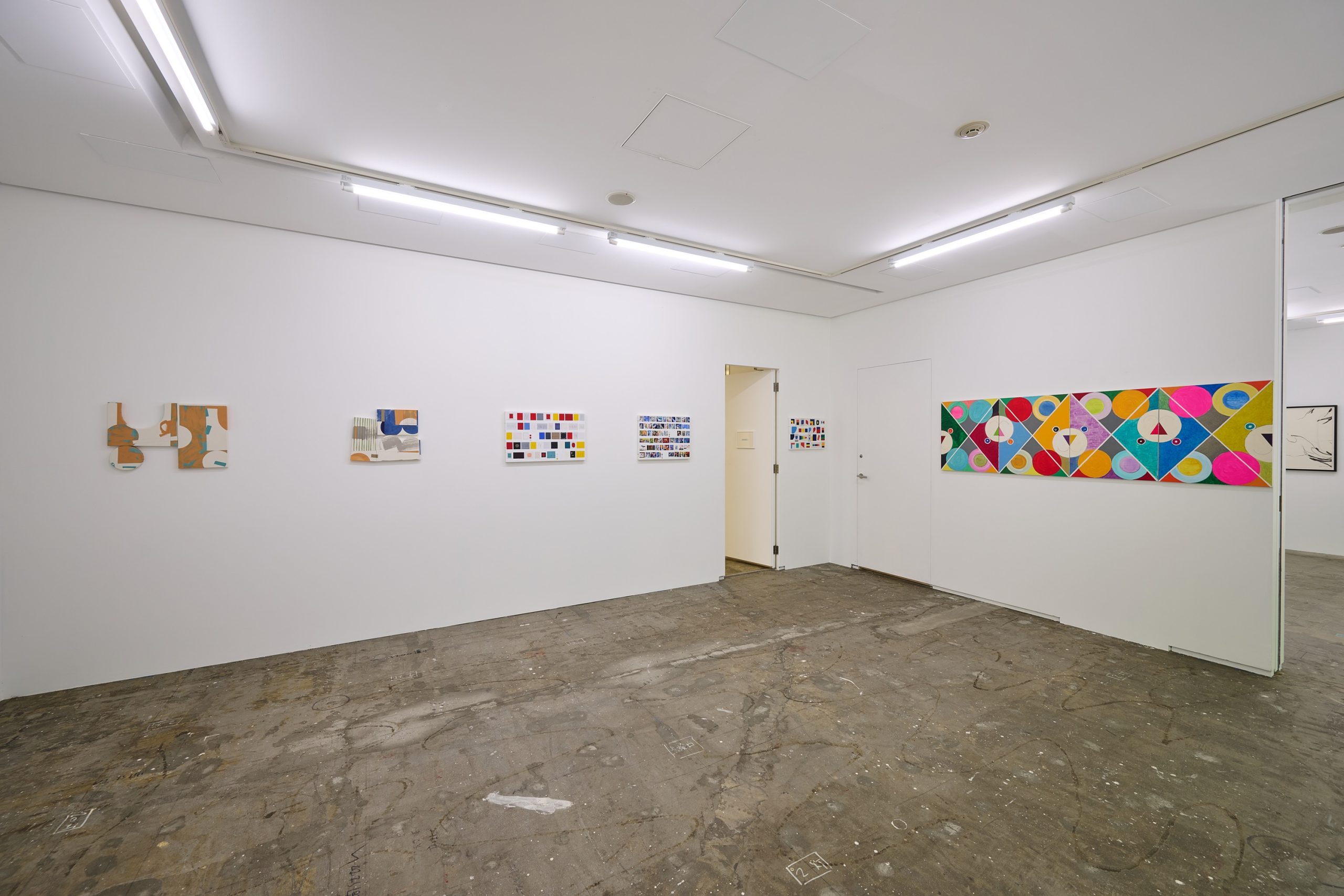
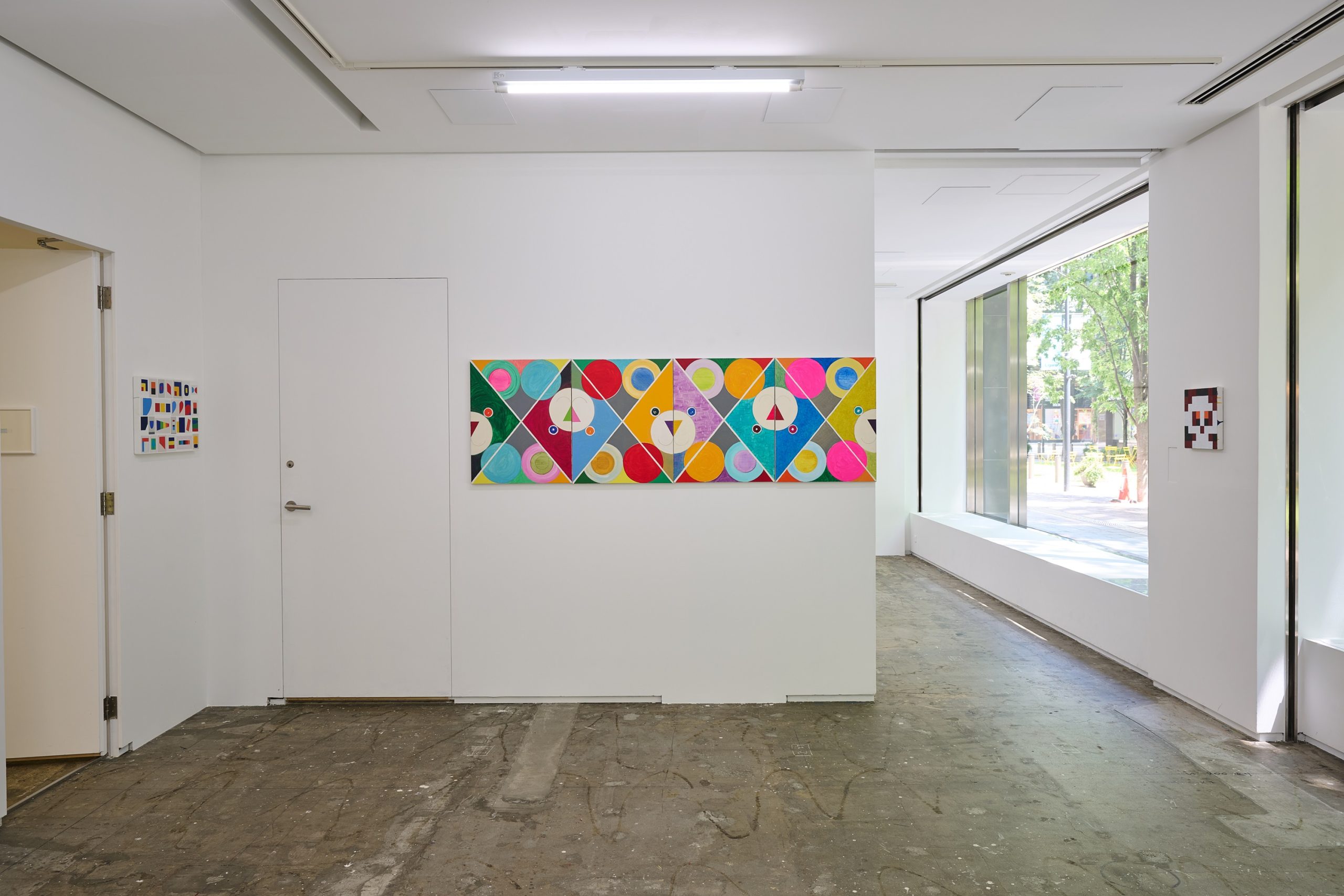

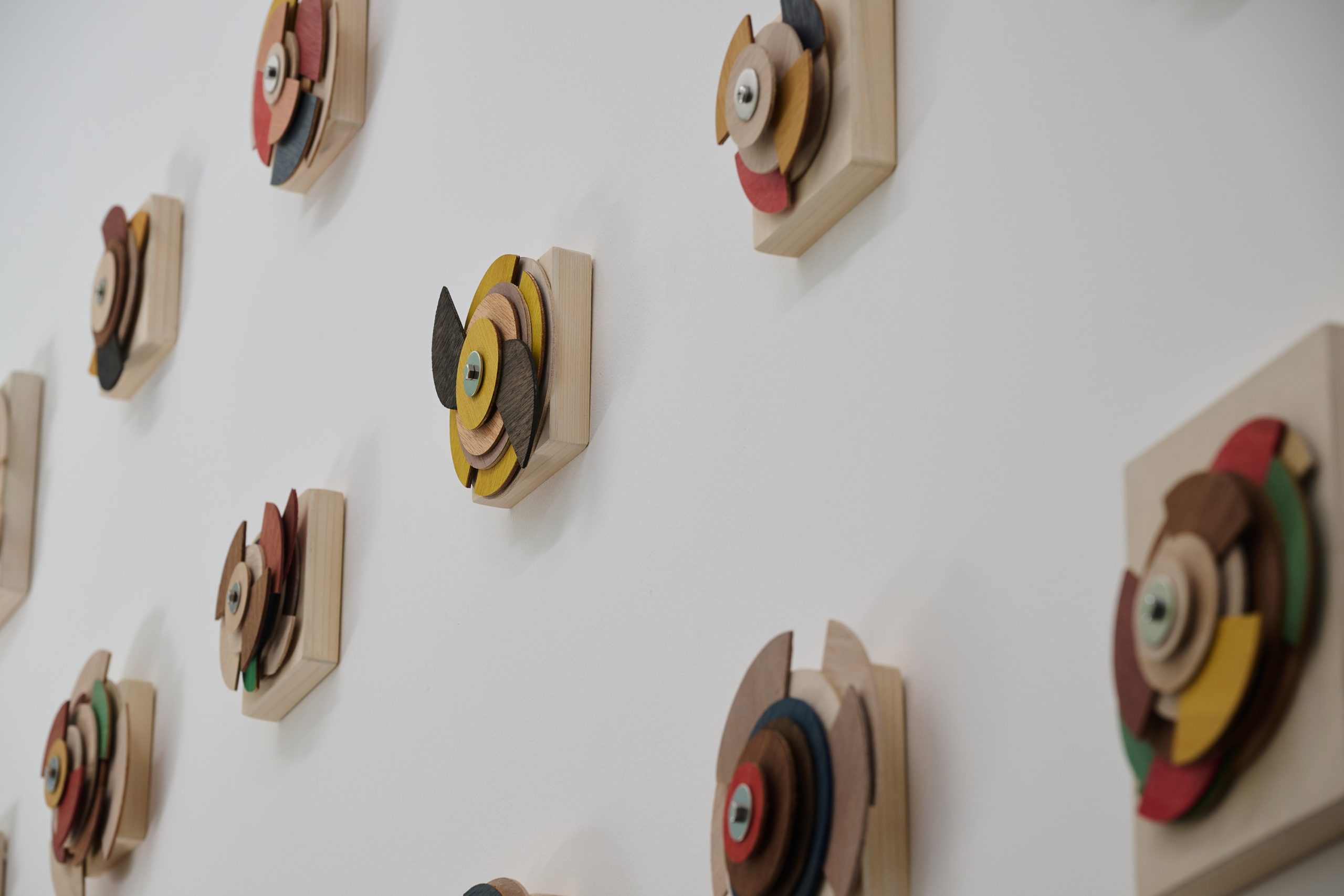
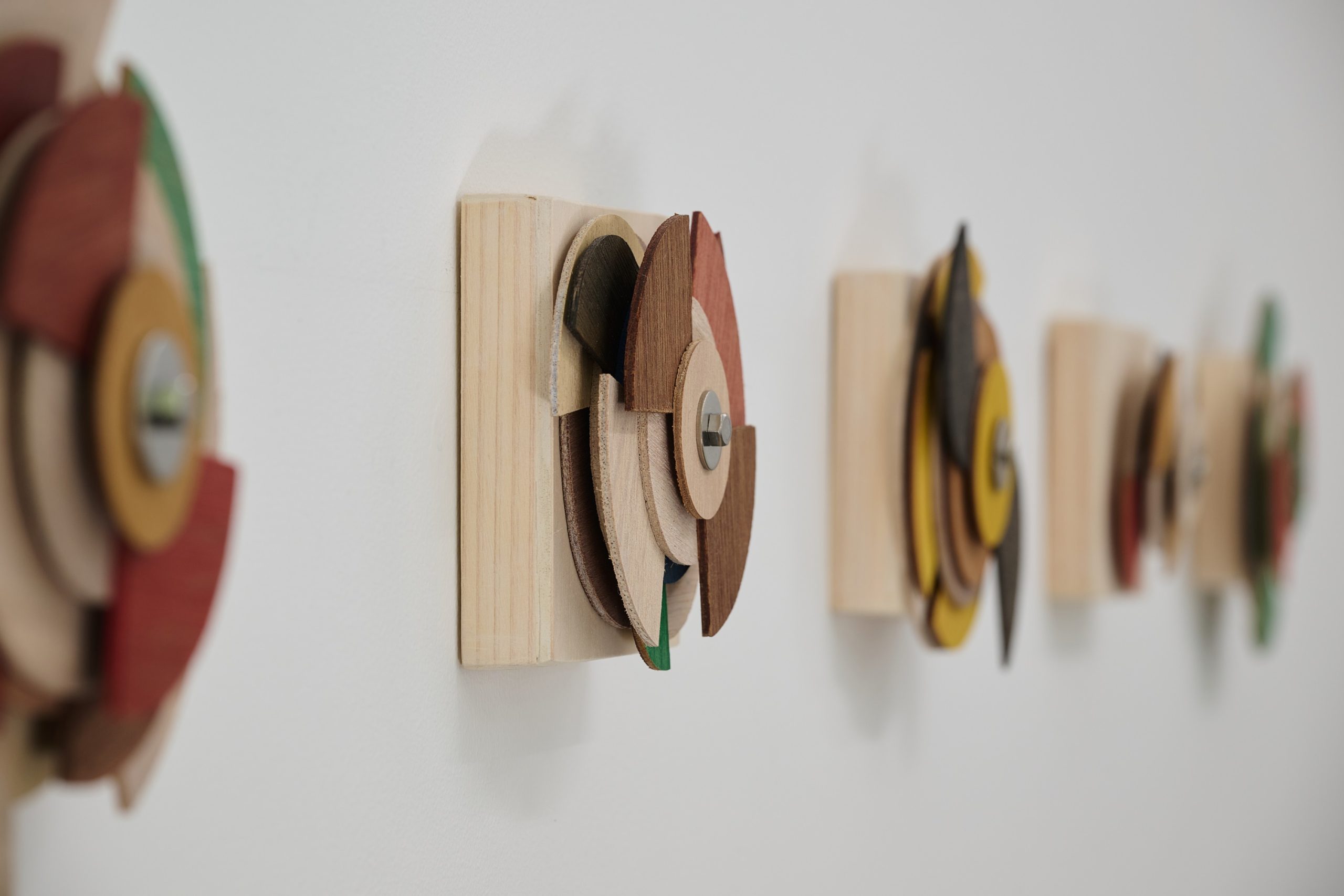
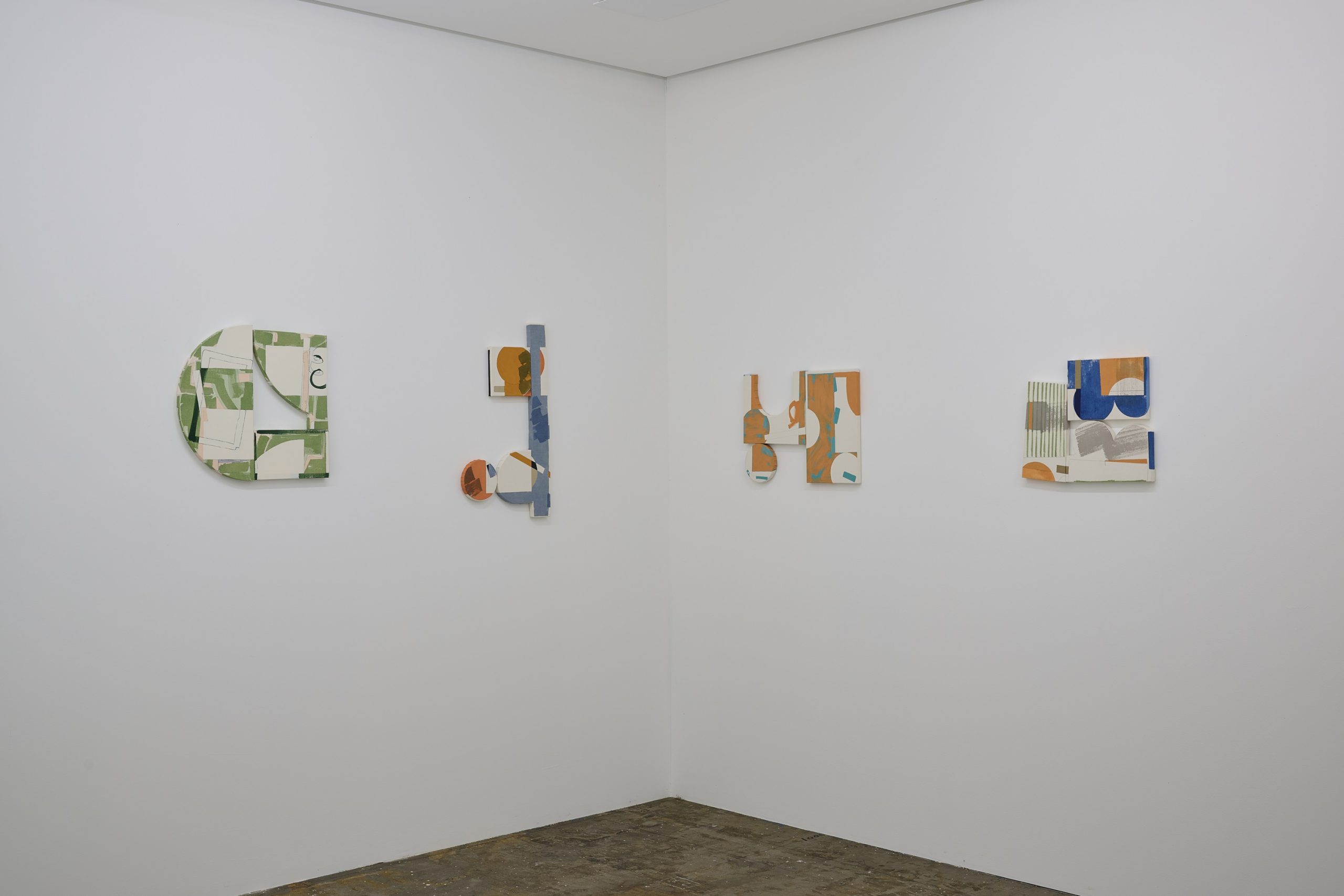
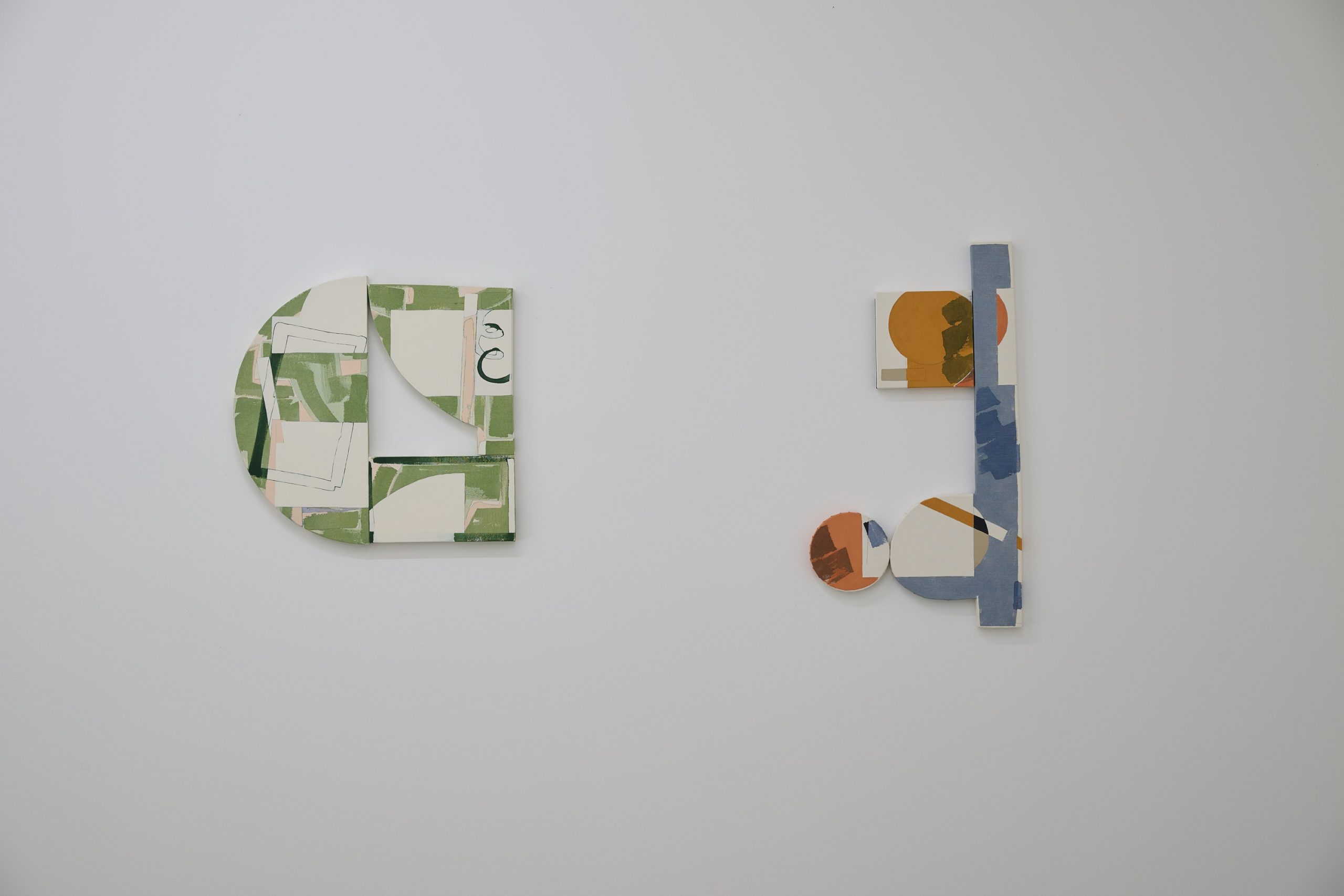
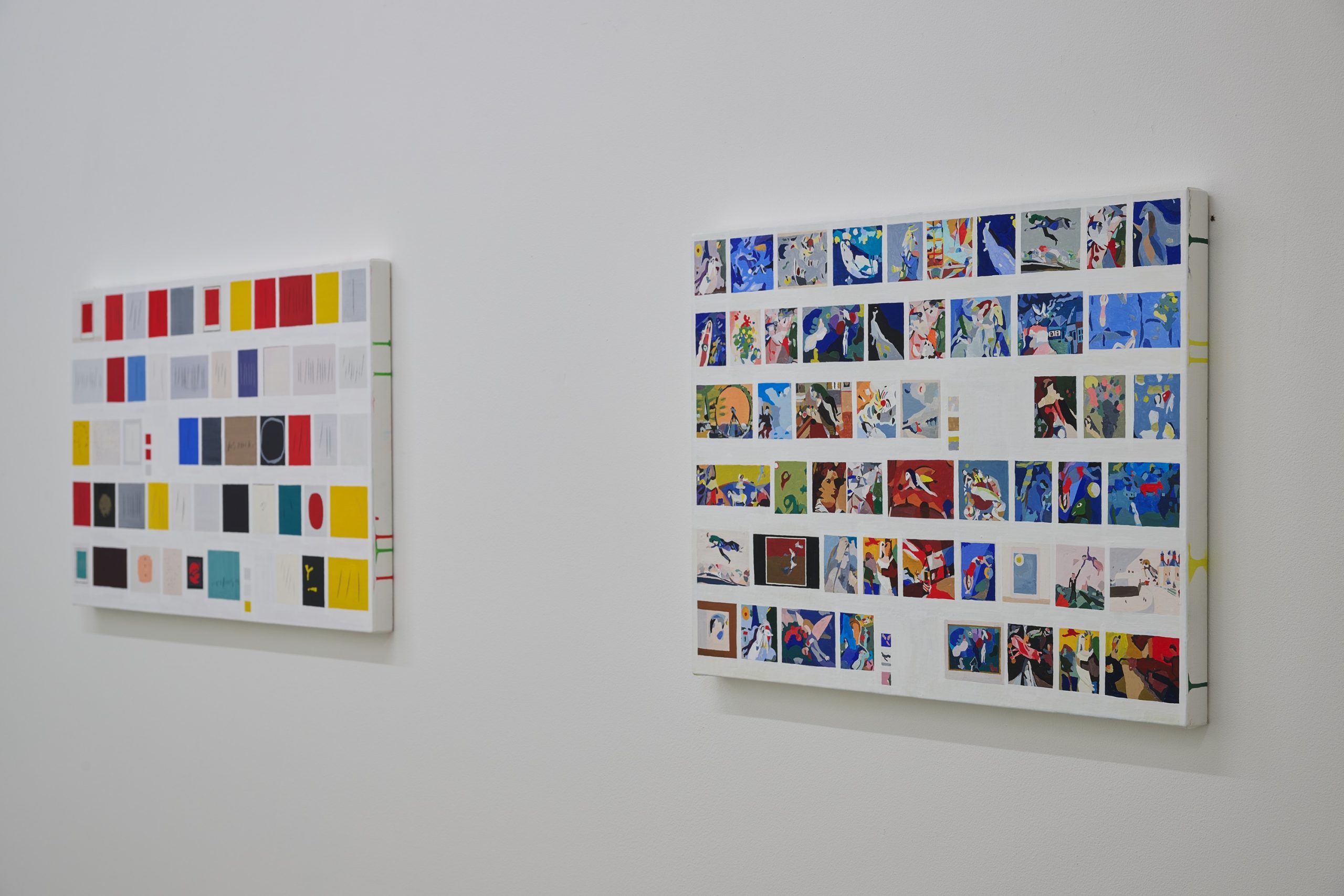
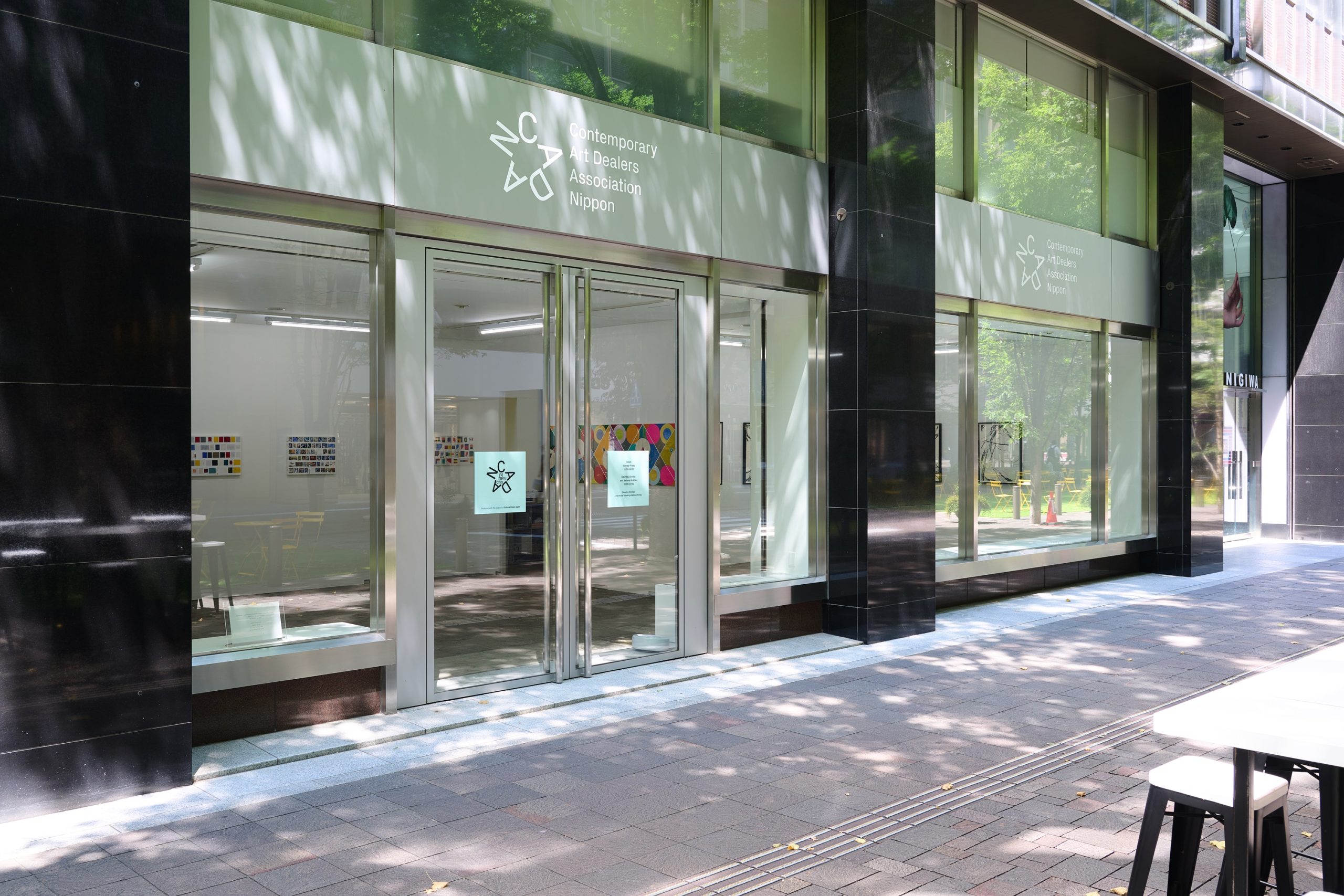
Patterns and Distance
Makoto Ito, Shoko Masunaga, Kota Sasaki, Nao Osada, Yuka Hotta
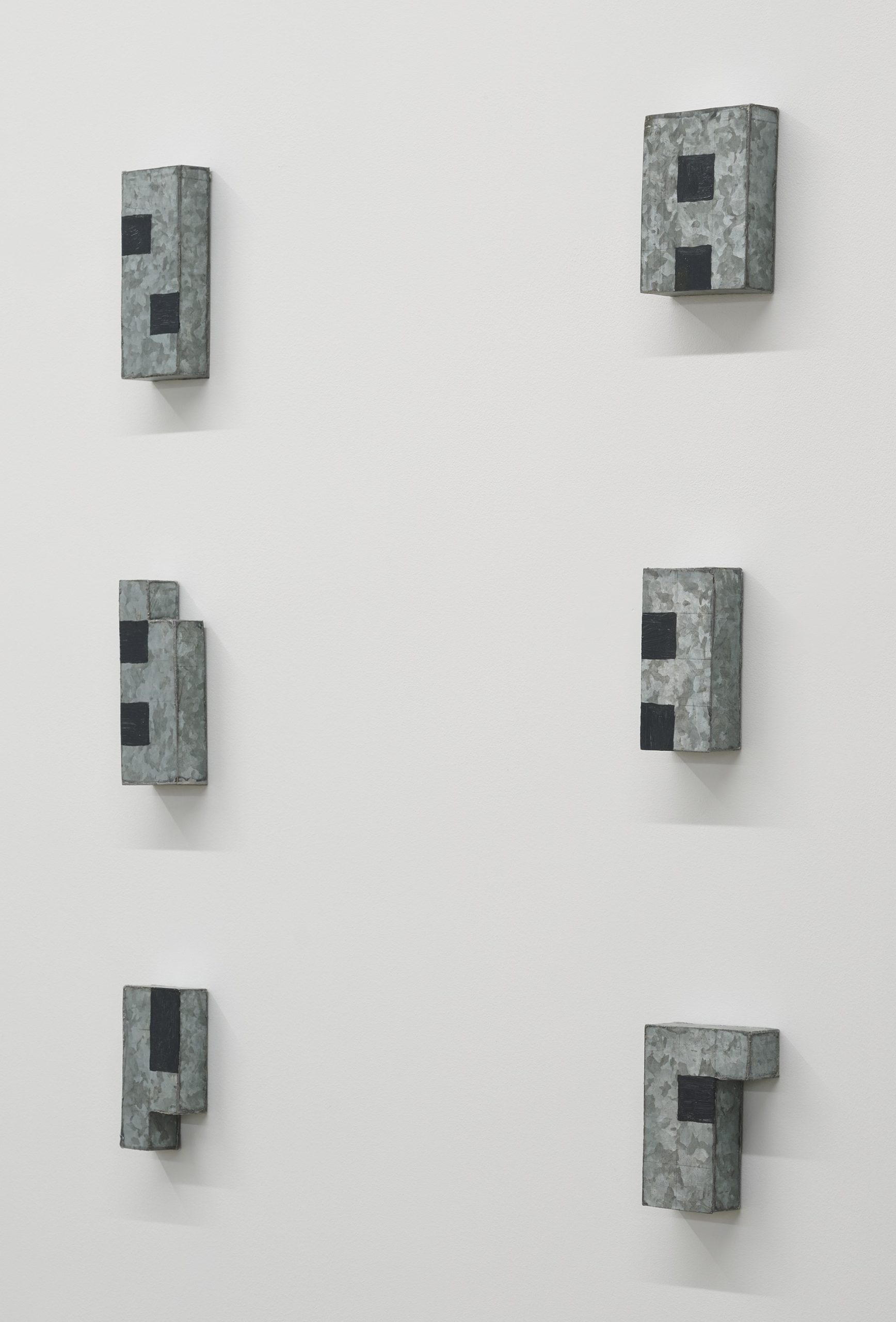
Blue sky
2017
Galvanized steel sheet, oil
60 x 72 x 3 cm
Makoto Ito
Ito’s formal yet light-hearted and humorous sculptural works created using diverse materials embody the possibilities of contemporary sculpture.
Blue Sky (produced in 2017) is one of the pieces that draw inspiration from distant scenery visible from a certain location and portray it as something touchable within easy reach. The work uses a photographed bird deterrent attached to a remote power cable as a motif. It expresses the scale of distance as it converts the miniature version of the actual scenery into a sculpture.
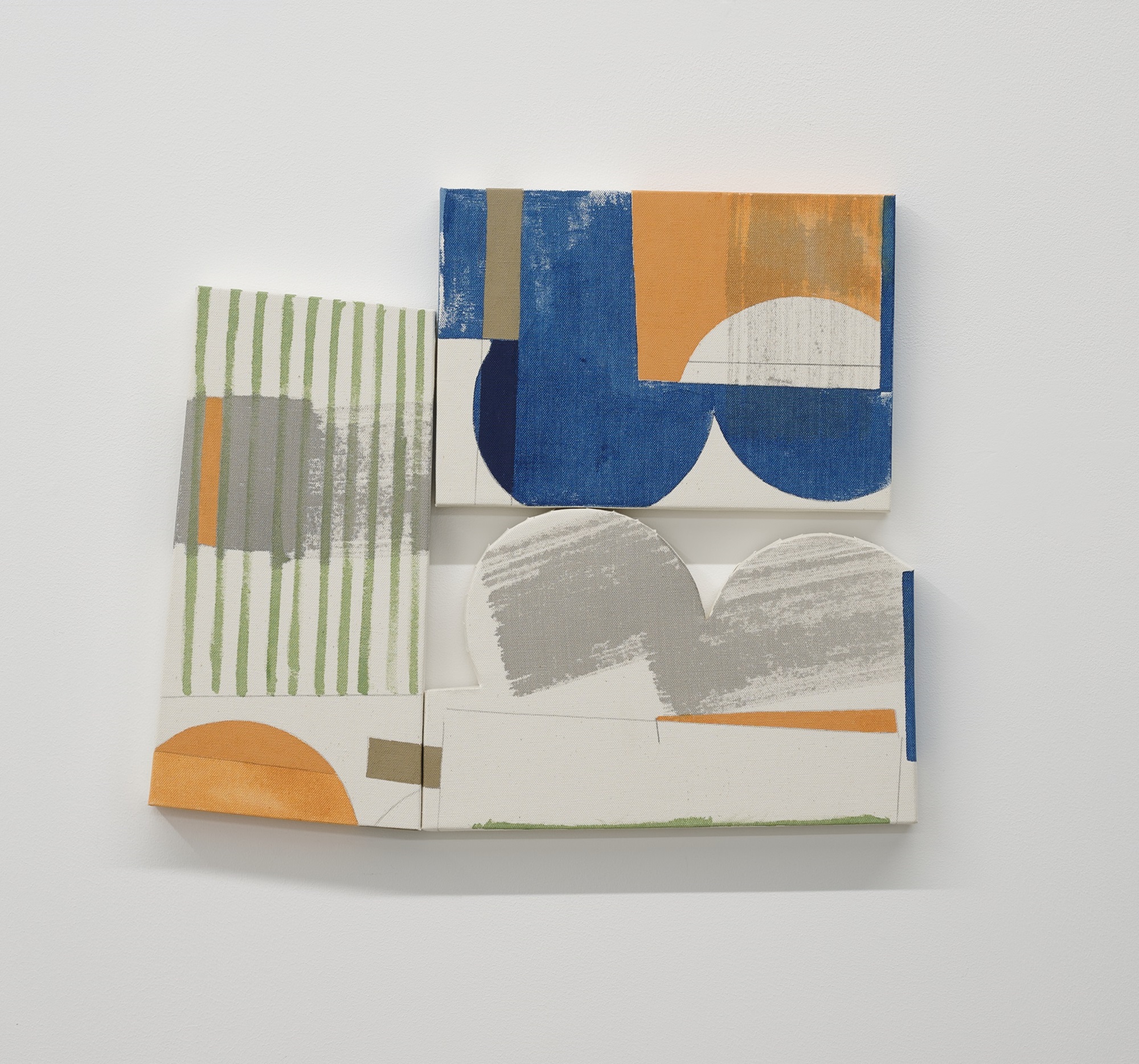
Session1
2023
Panel, canvas, acrylic, pencil
38.5 x 46 cm
Shoko Masunaga
With painting as her starting point, Masunaga employs diverse production techniques. Her works, which emphasize their relationships with the surrounding environment and space, possess variable and interchangeable qualities.
Session (produced in 2023) is composed of a combination of several shaped canvases. Their colors, lines, and patterns softly link together, as if the adjacent canvases respond to each other, forging rich relationships.
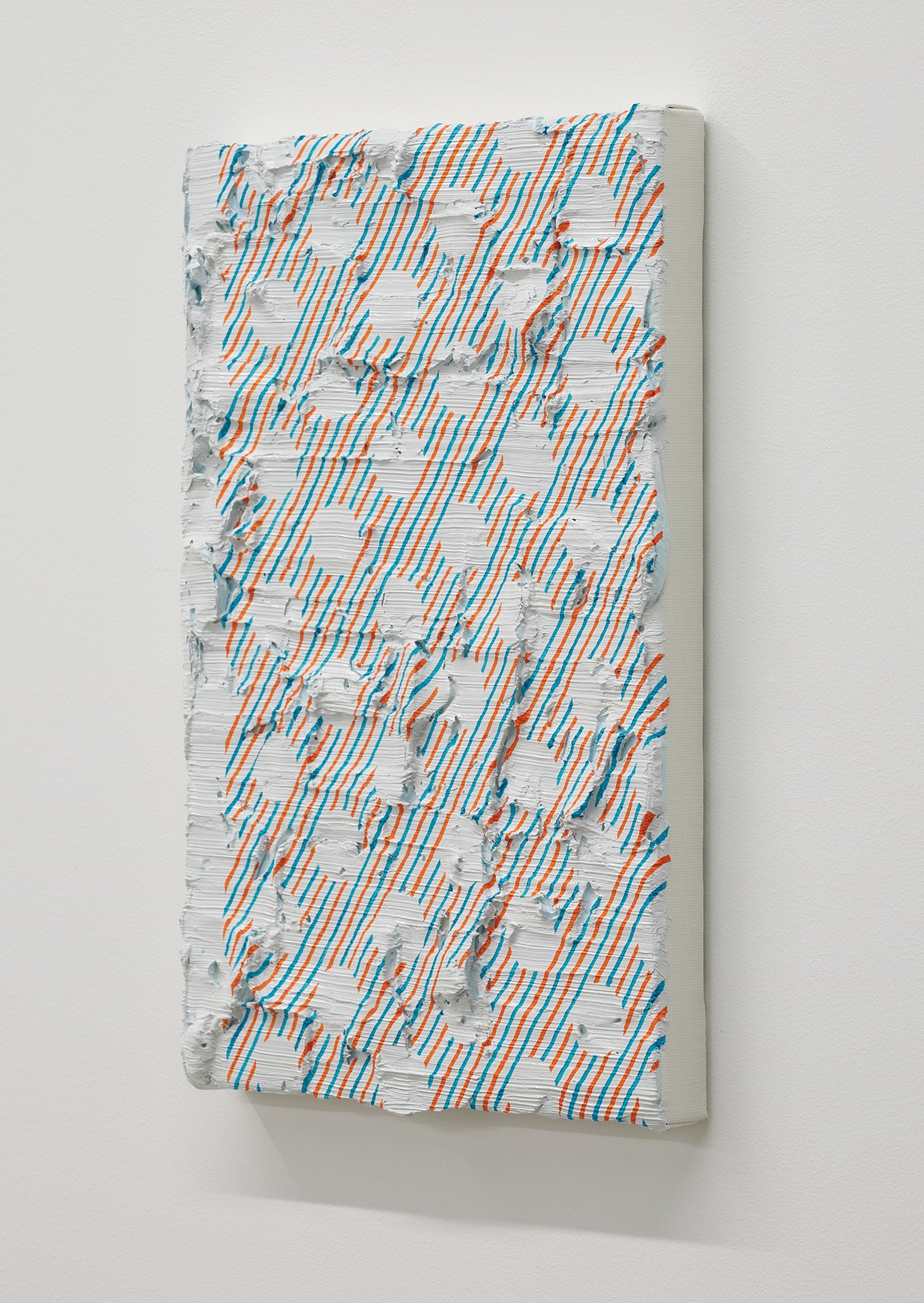
Untitled
2024
Oil on canvas
33.3 x 24.2 cm
Kota Sasaki
Using 3DCG, Sasaki creates paintings that intersect two and three dimensions through the depiction of spaces such as an atelier or a gallery.
In Untitled, a striped pattern is drawn on a thickly painted canvas. The pattern (two dimensions) is painted onto a rugged-surfaced support structure (three dimensions), creating visual fluctuations caused by different viewing angles. The method produces an illusion of compressed imagery on the canvas, making viewers conscious of the act of seeing.
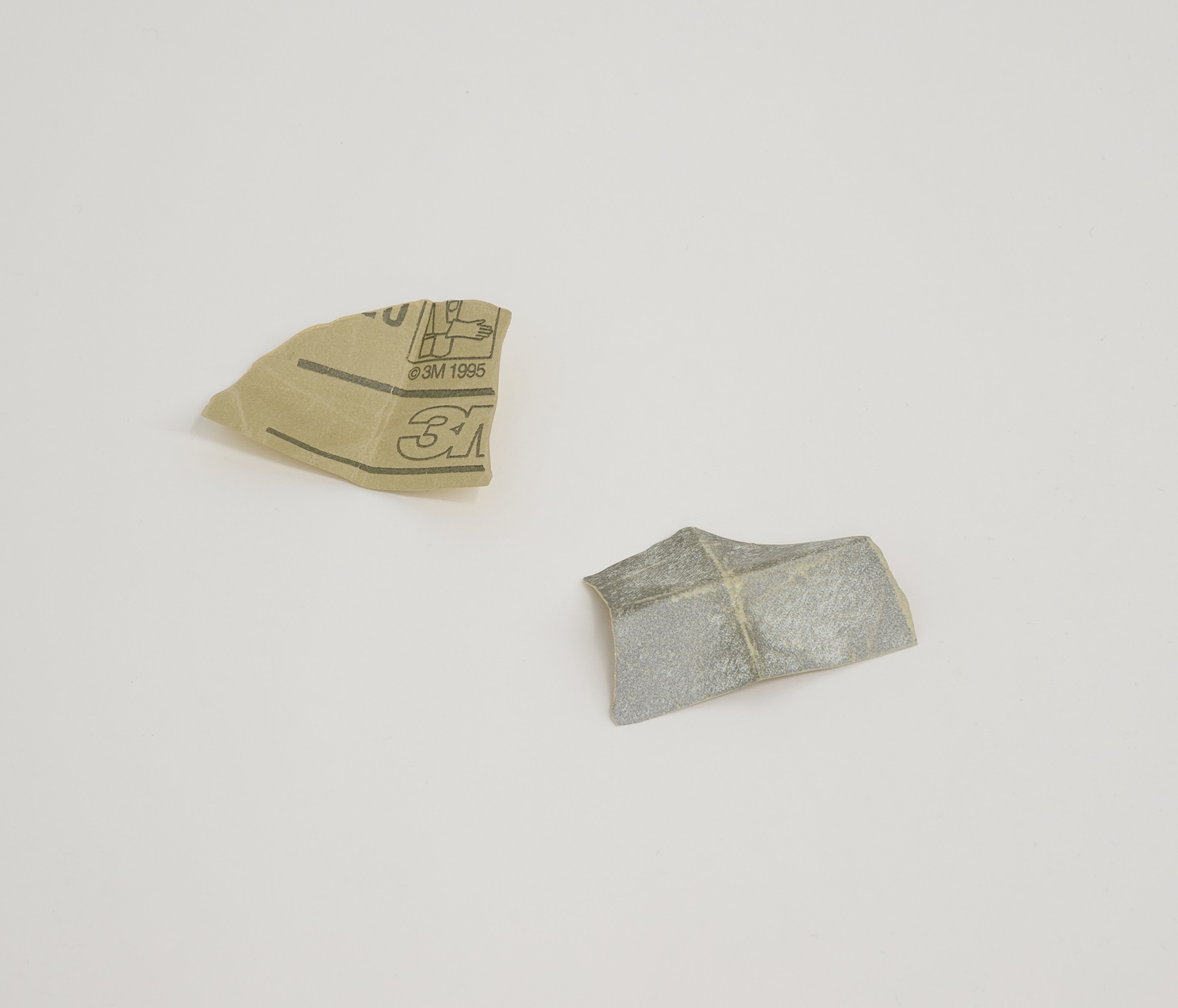
Surface Preparation (Sandpaper 3M)
2024
Screenprint, brass
each 6.0 x 4.5 x 2.0 cm
Nao Osada
Osada creates works using silkscreen to print the surface elements of a familiar object onto the surface of a material different from that of the original item.
In Surface Preparation (Sandpaper 3M), the images on the front and back of a sandpaper sheet are printed on two identical brass pieces, which can be superimposed on one another. Osada’s works uncover ephemerality in trivial objects discarded in our daily lives and elevate them into something poetic. They inspire humble awareness in viewers, unsettling their sense of reality.

C-144
2024
Acrylic, pencil, gesso, panel
29.7 x 21 x 2 cm
Yuka Hotta
With painting as her starting point, Hotta’s creation is centered around drawings and installations. In her recent works, she has experimented to use diverse media as intermediaries to produce drawings and incorporated printing as a method of expression.
Titled C, the series traces an eyeless exploration depicted using bodily senses. Its free and relaxed strokes rely on animated sensation to render images evocative of breathing.
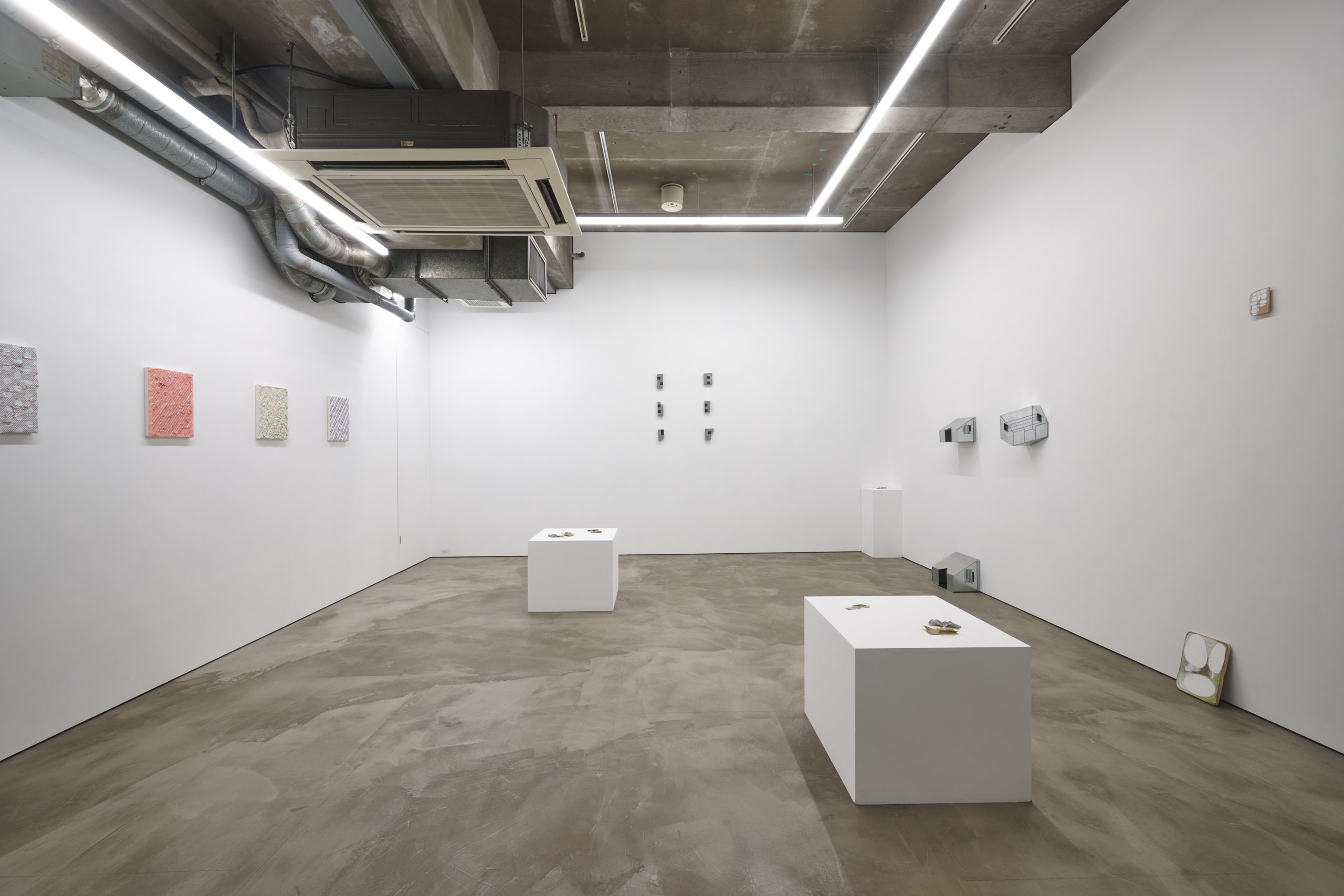
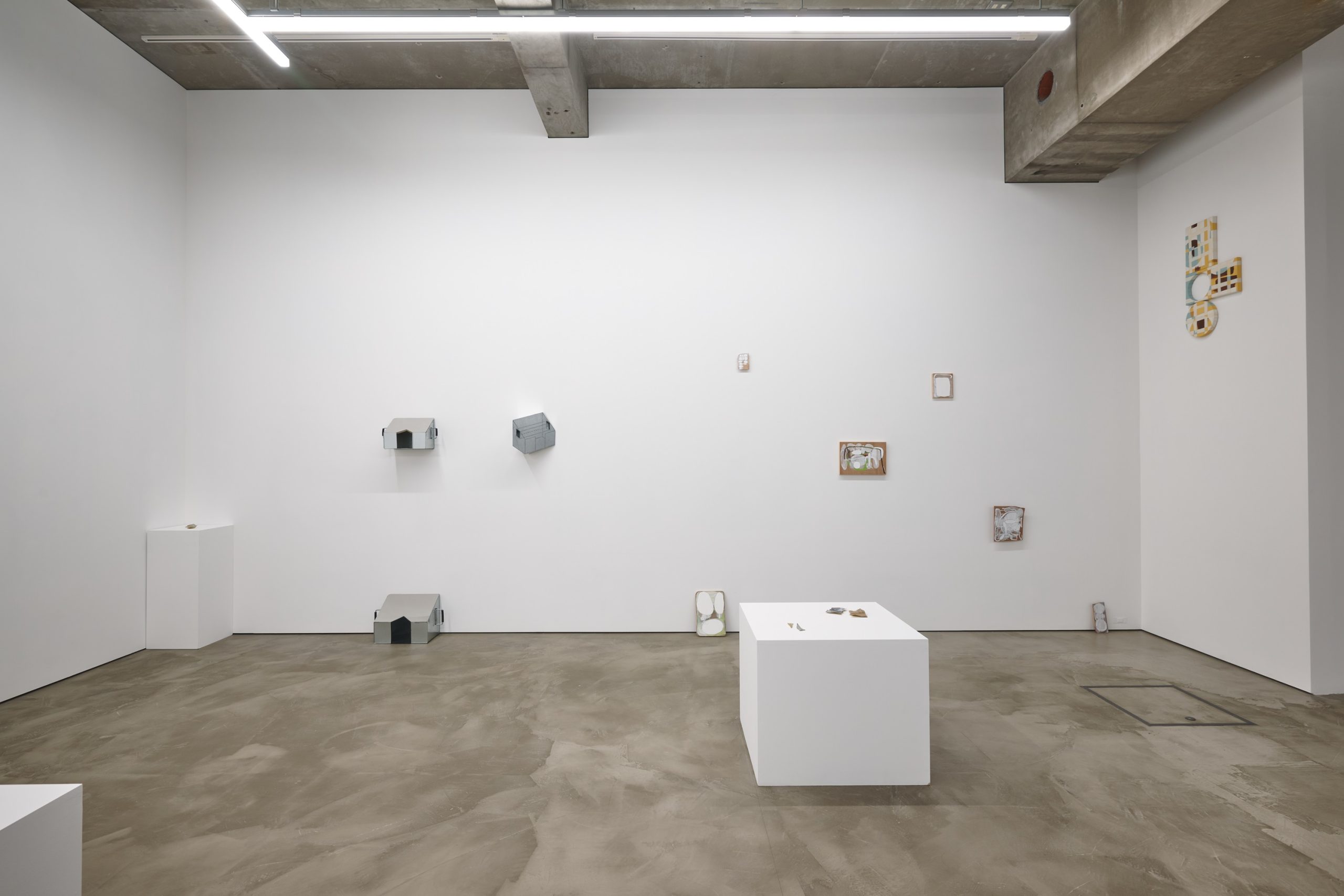
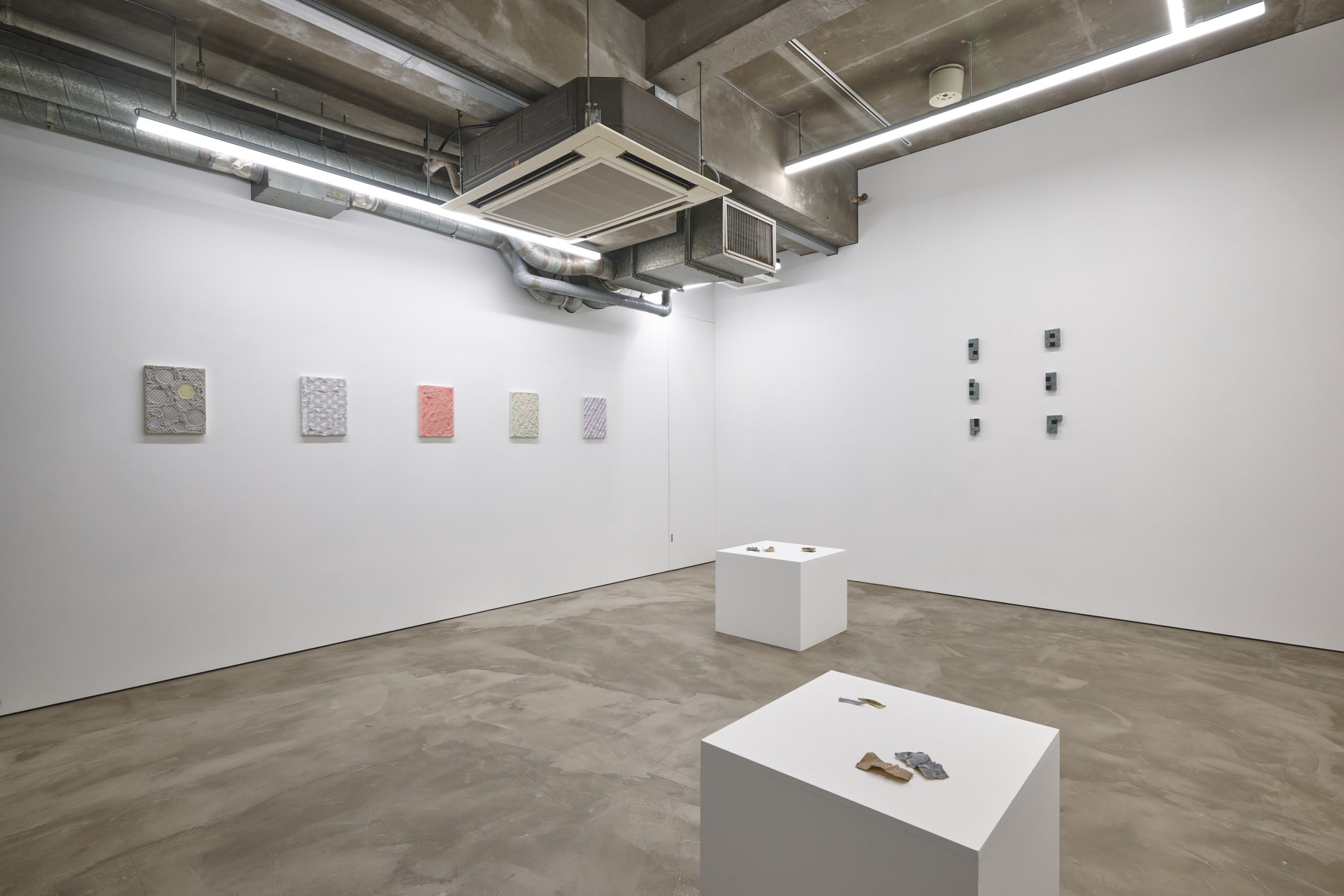
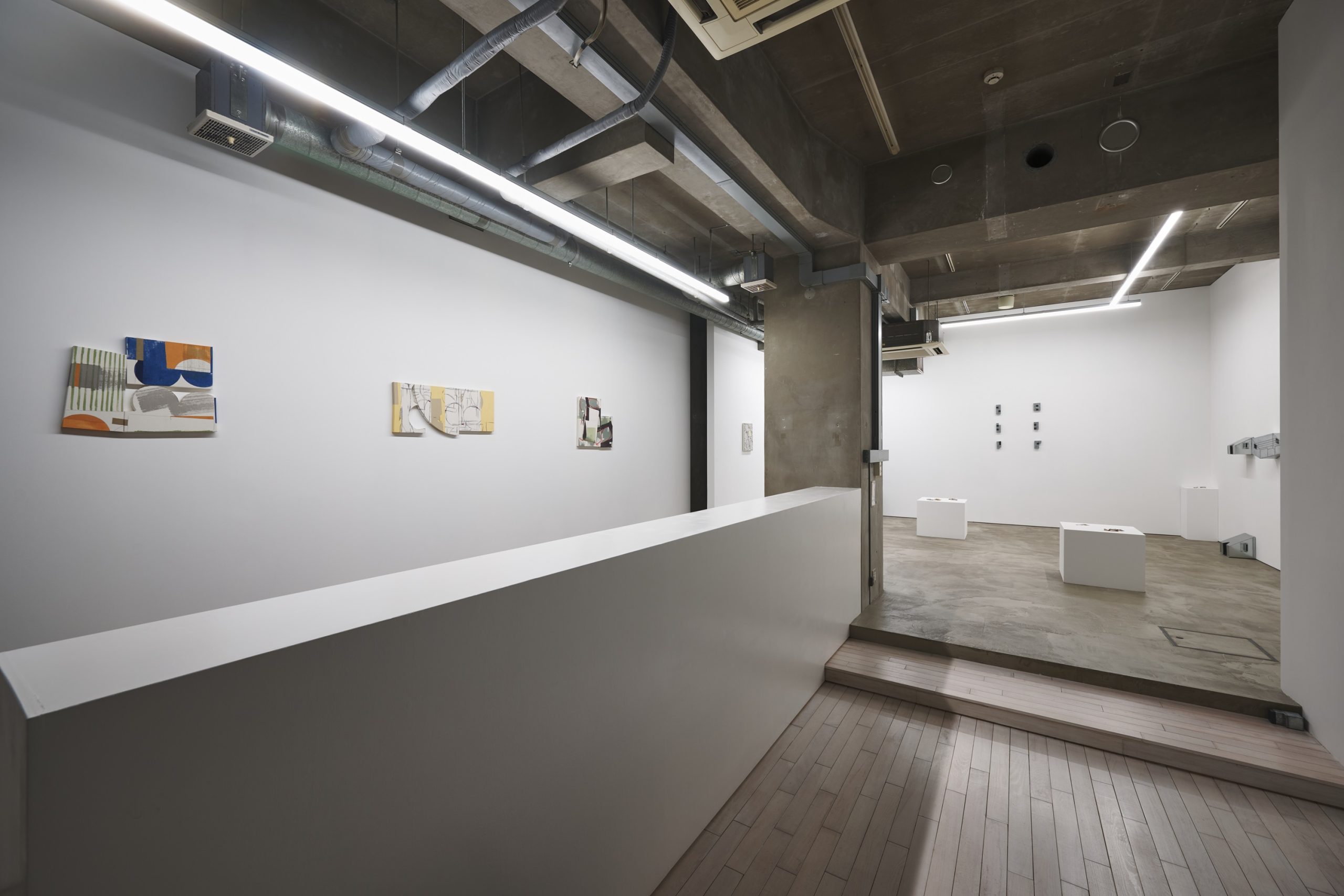
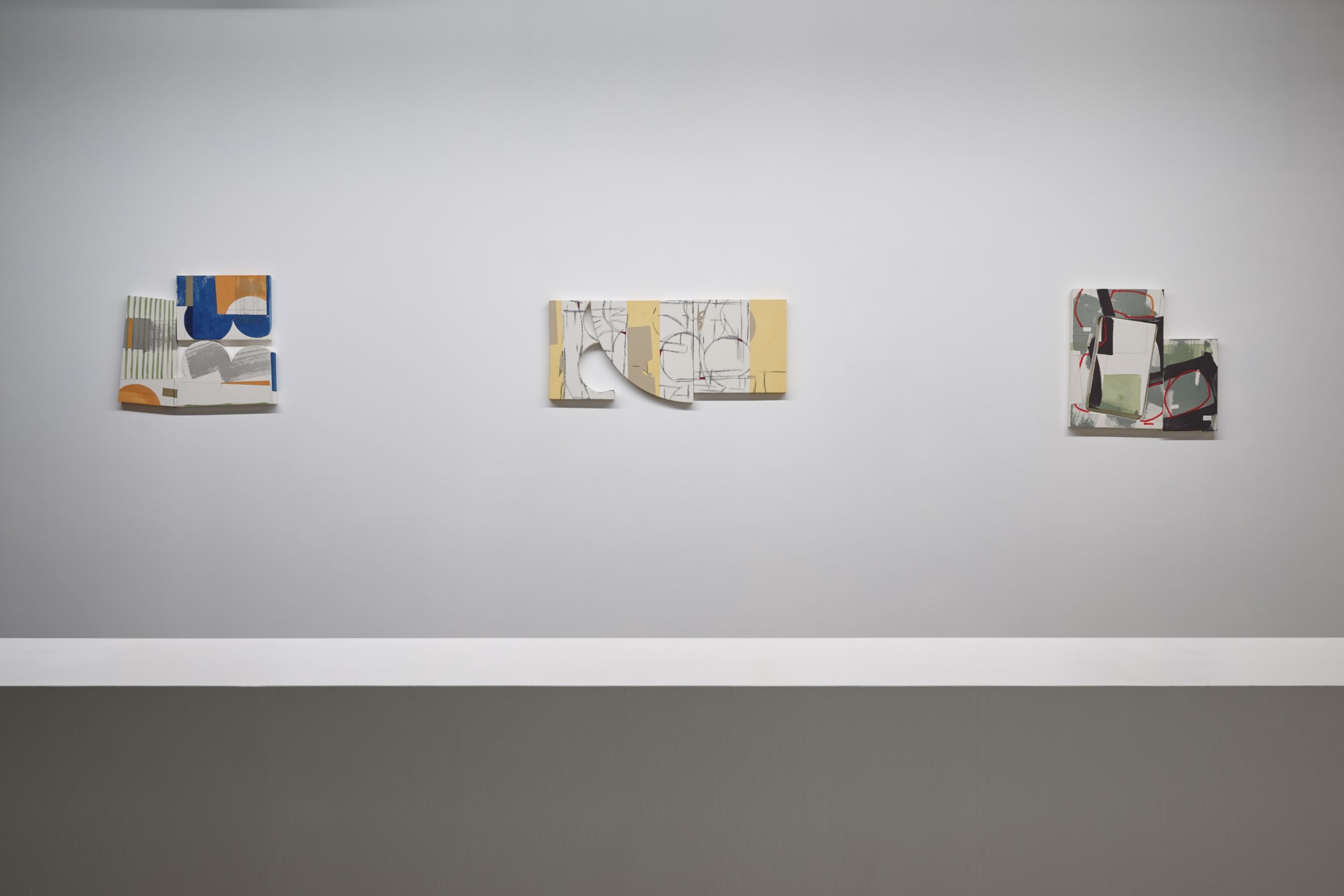
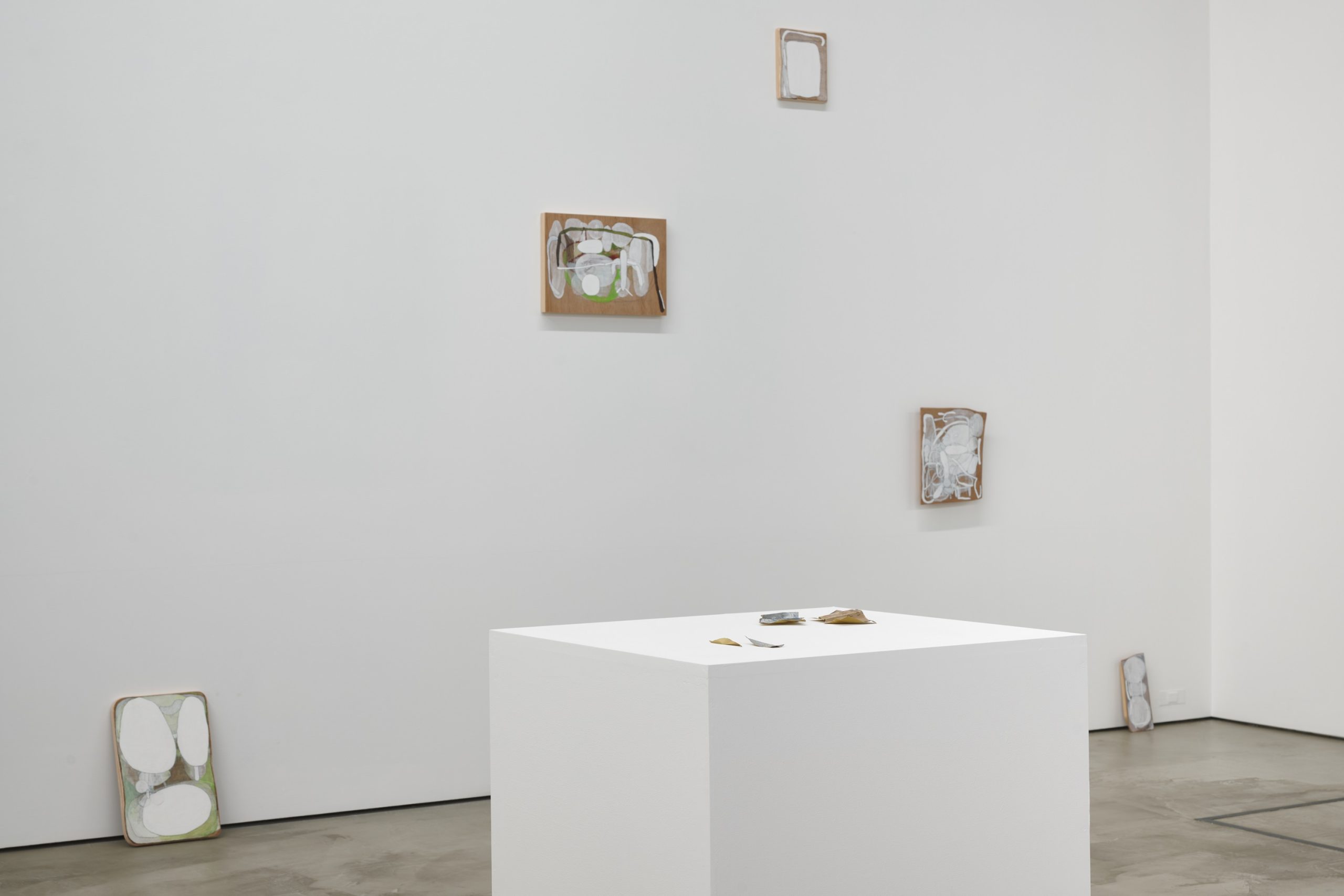
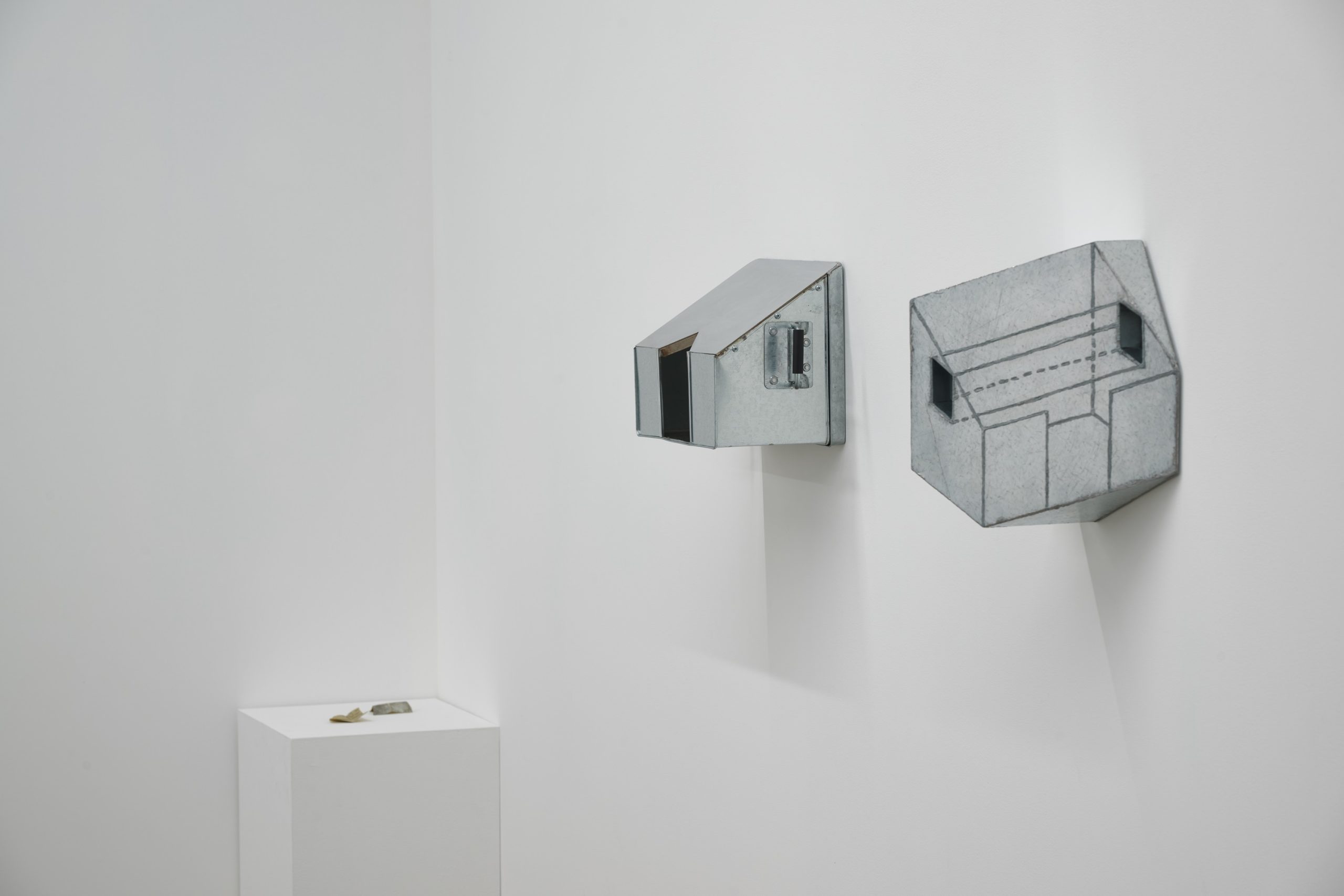
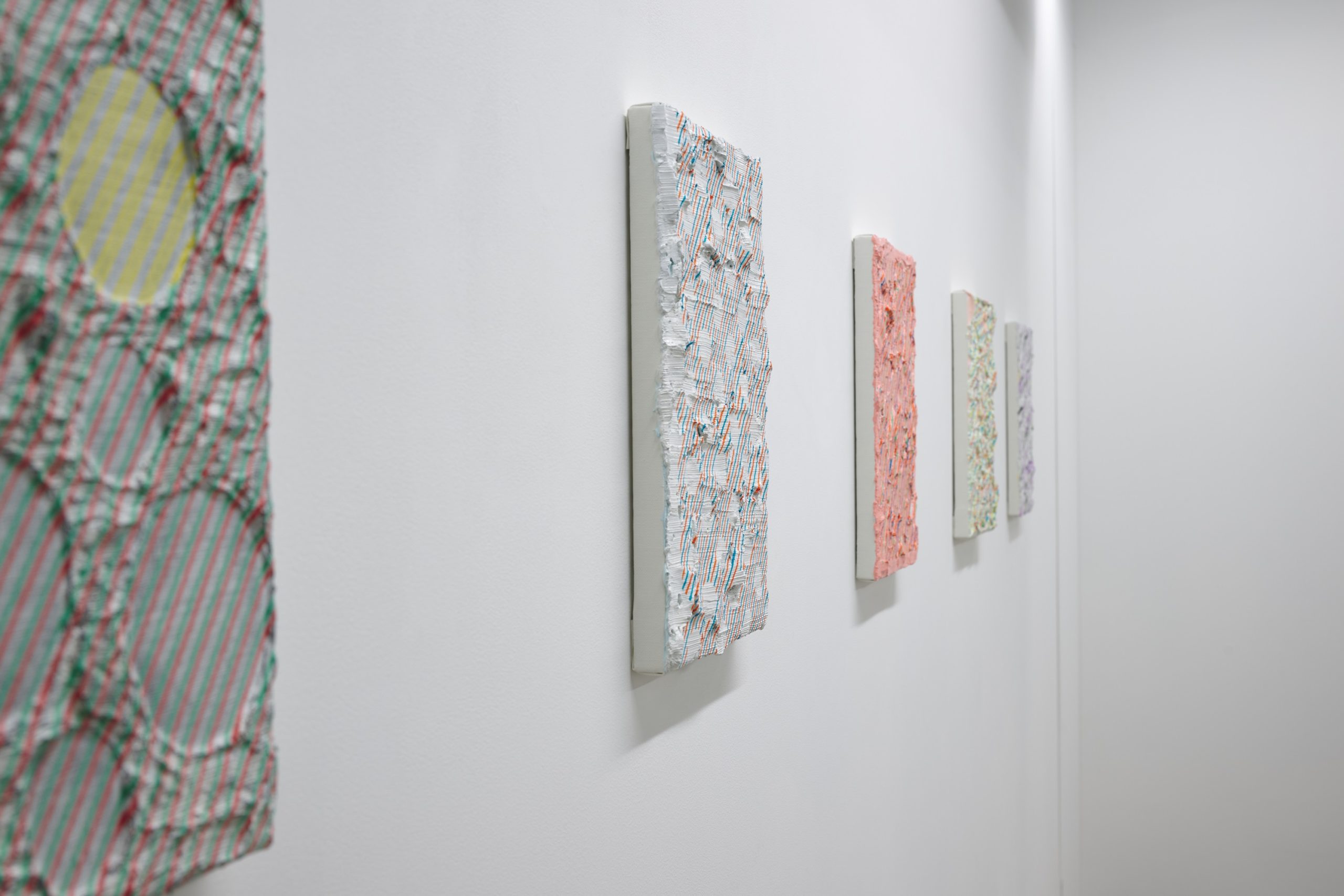

Shoko Masunaga : What Comes After the Beyond
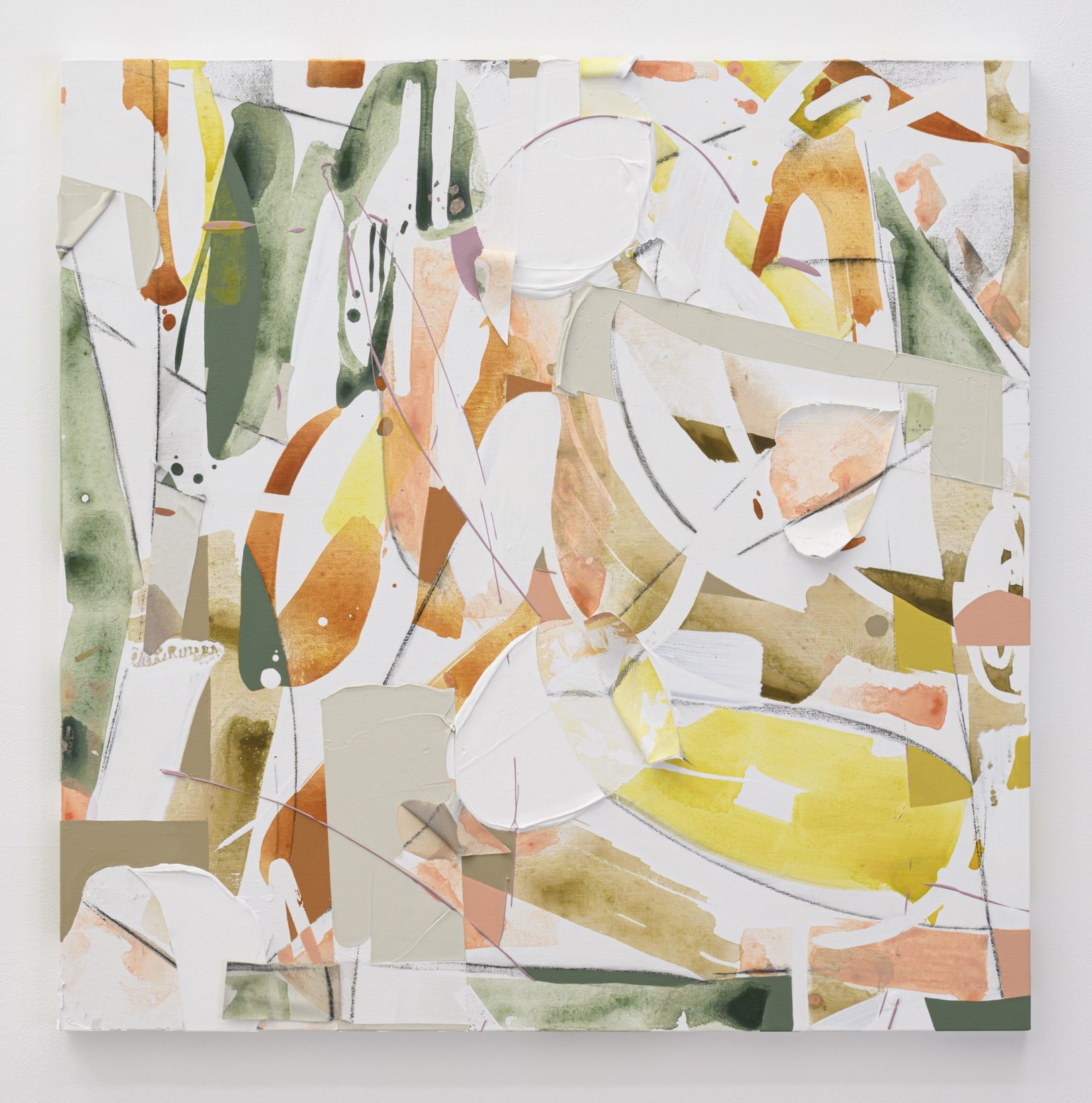
At a closer distance, it is not a field of flowers
2023
Panel, canvas, acrylic, gel medium, charcoal
73 x 73 x 5.5 cm
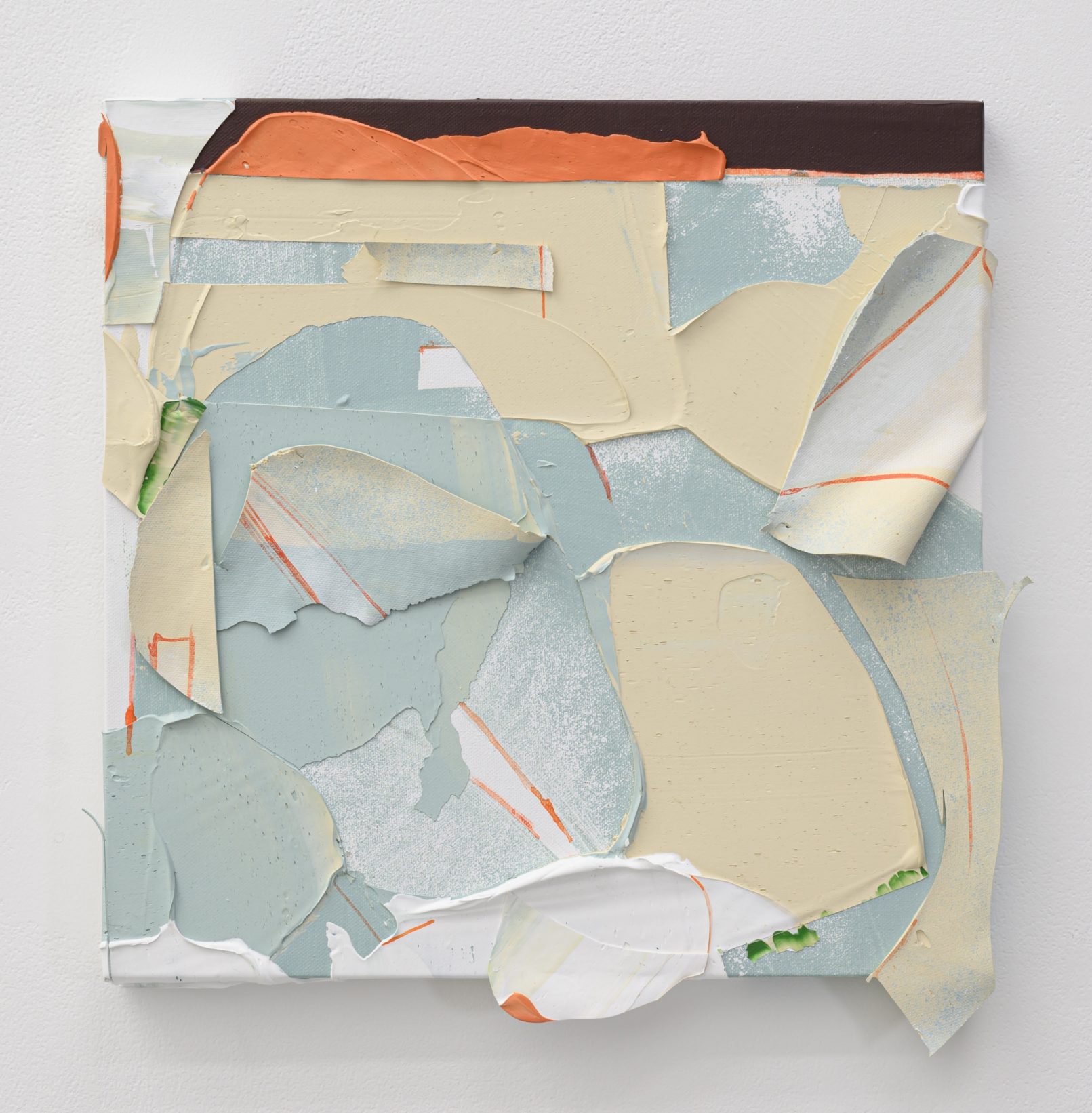
For now, existing at the boundary of the named time
2023
Panel, canvas, acrylic, gel medium
37 x 35 x 4.5 cm
Maki Fine Arts is pleased to present What Comes After the Beyond, Shoko Masunaga’s first solo show at the gallery, starting Saturday, March 18, through Sunday, April 23, 2023.
—
A Painting as an Occurrence
Ryo Sawayama, art critic
In Shoko Masunaga’s creative process, paintings are formed, not drawn. Her paintings do not involve preconditioned support mediums that are limitlessly provided to the artists. The common circumstance of images being drawn onto a support medium canvas, therefore, is avoided to the greatest degree.
Instead, support mediums used as the foundation of Masunaga’s paintings are more like maneuverable materials that are fluid and flexible. Consequently, the images are generated alongside the support medium’s physical plasticity and thickness. The paintings evolve and expand. They are layered, folded, curved, twisted, peeled, diverted, ripped off, and pasted on. Her paintings are formed by way of accepting the various shape-changing actions described by these dynamic words. It is a logical and structural consequence that the formation of the support mediums and the genesis of the images occur simultaneously.
The paintings are uninterrupted recordings of the artist’s behavior and actions. And released from the narrow confines of the wooden frames, the canvases can now display their shape-changing abilities in full-scale. While the cloth materials cannot support themselves on their own, if bent severalfold or transformed and redirected overtime, we realize that motion has been added to the materials. In that respect, the paintings become the artist’s various behaviors; the material’s tangible flexibility or transformability; and the mechanical location or occurrence in which forces like gravity intersect while in an inseparable state. A painting functioning as topos—a place to record continuous occurrences—is now established.
It is at this point that Masunaga’s paintings change from something noun like to verb like, because her handcrafted creations are designed to be dynamic paintings that originate and evolve in front of the viewer’s eyes. They flutter as though taking in the surrounding air and wind, pulsing ever so slightly with its own breath’s cadence, and existing discreetly.
—
Born 1980 in Osaka, Japan, Shoko Masunaga graduated from Seian Zokei Junion College in 2001 with a degree in painting. She was in New York from 2018 to 2019 through the NARS Foundation International Residency Program. Her creative process originates from paintings and utilizes a variety of techniques. By focusing on the connections to the surrounding environment and space, her works become fluid and interchangeable. Recent major shows include editing (solo, nidi gallery, 2022), replace (solo, LOKO Gallery, 2021), Ordinary objects (group, Maki Fine Arts, 2020), Box, Box, Box (solo, Cooler Gallery, 2019), CRITERIUM 93 Shoko Masunaga (Contemporary Art Gallery, Art Tower Mito, 2018), and VOCA—The Vision of Contemporary Art 2017 (The Ueno Royal Museum, 2017).
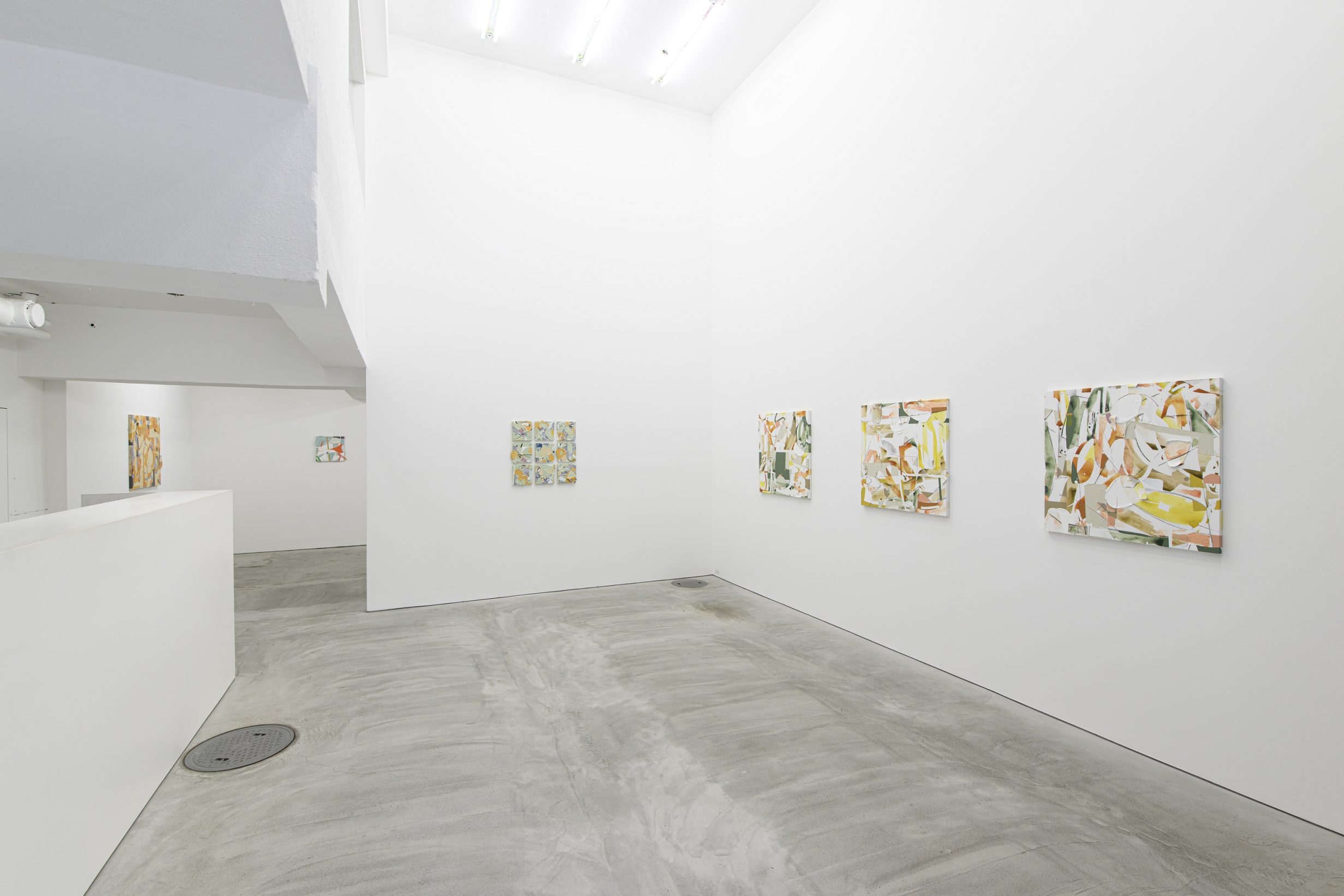
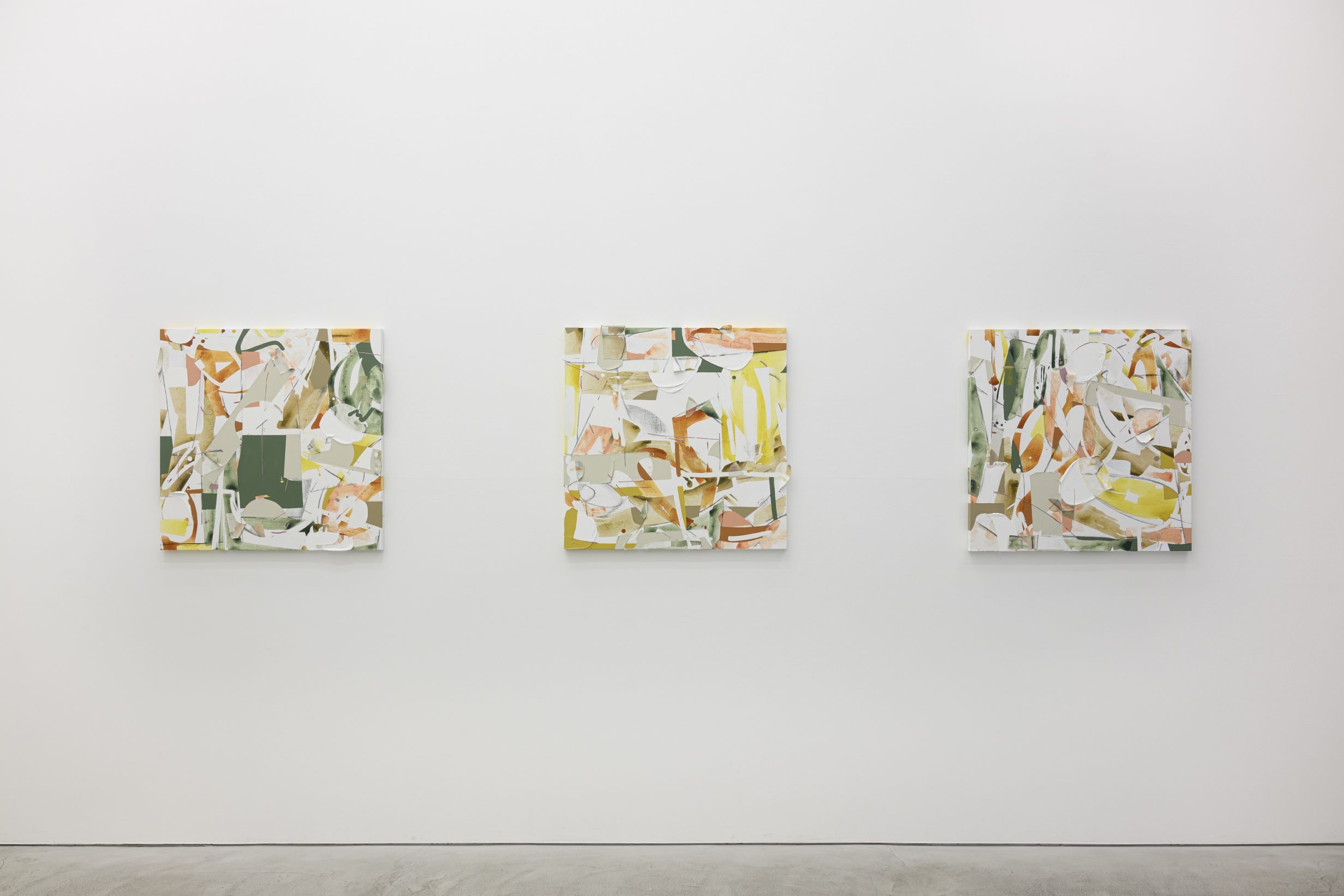
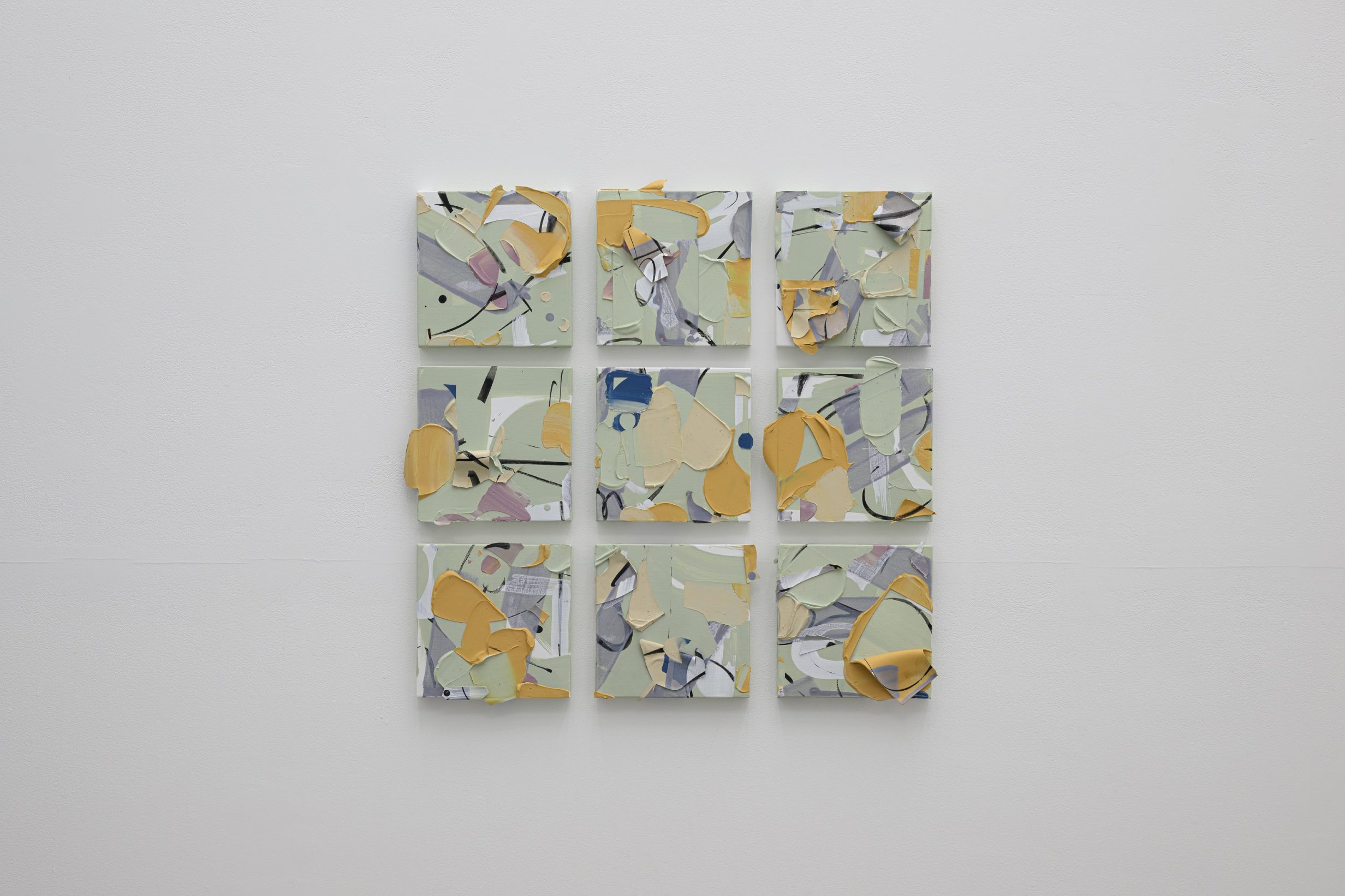
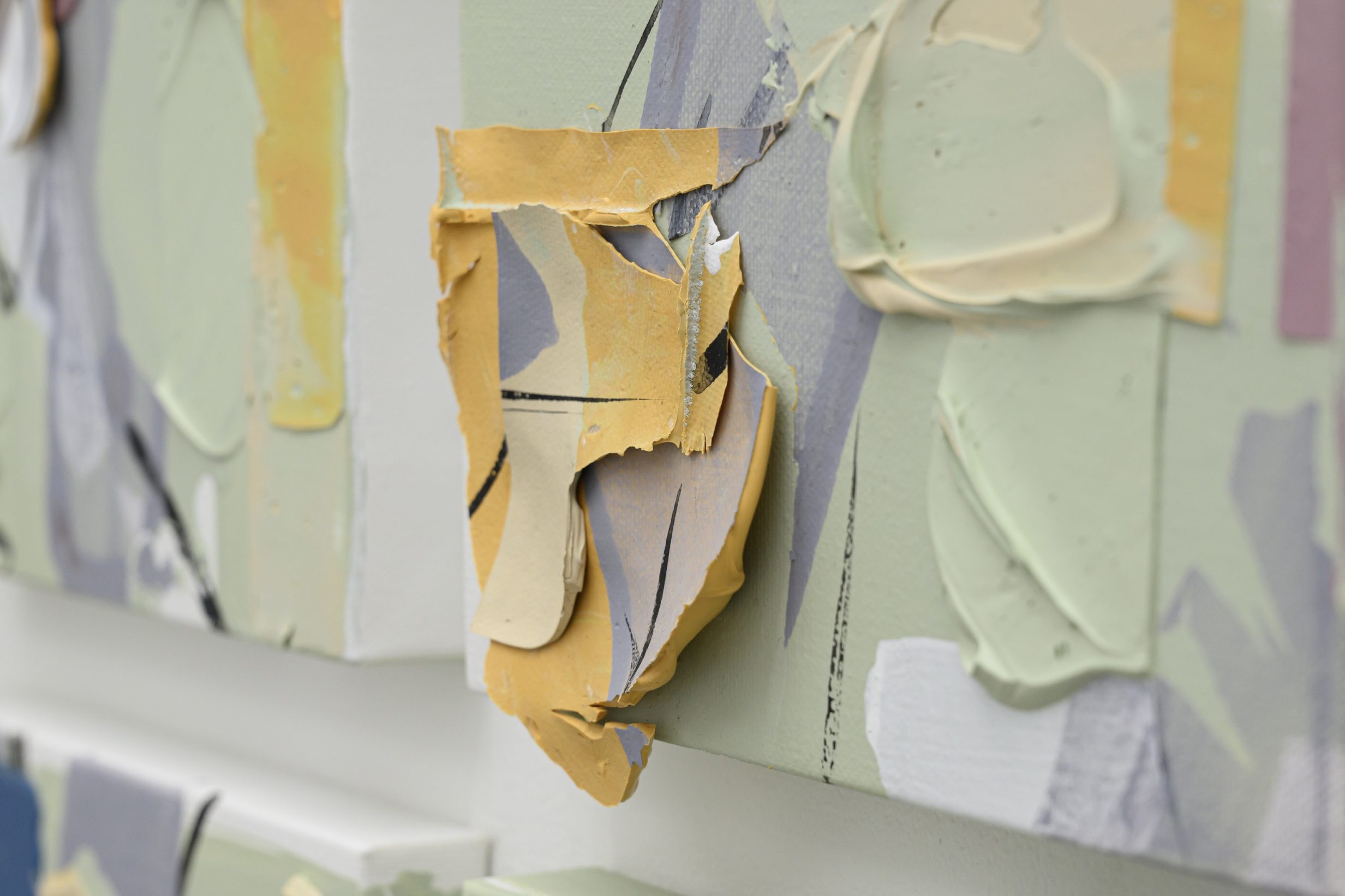
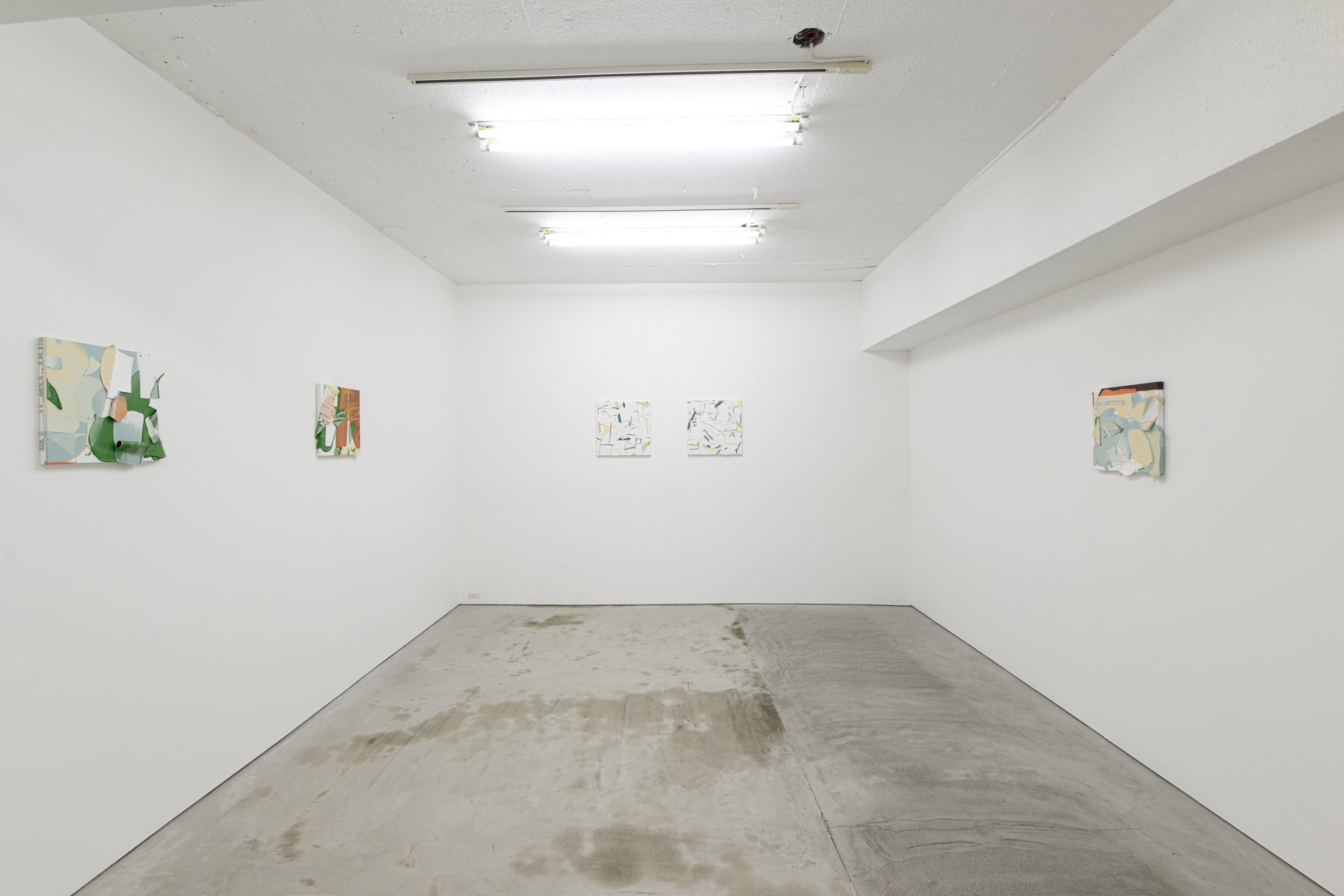
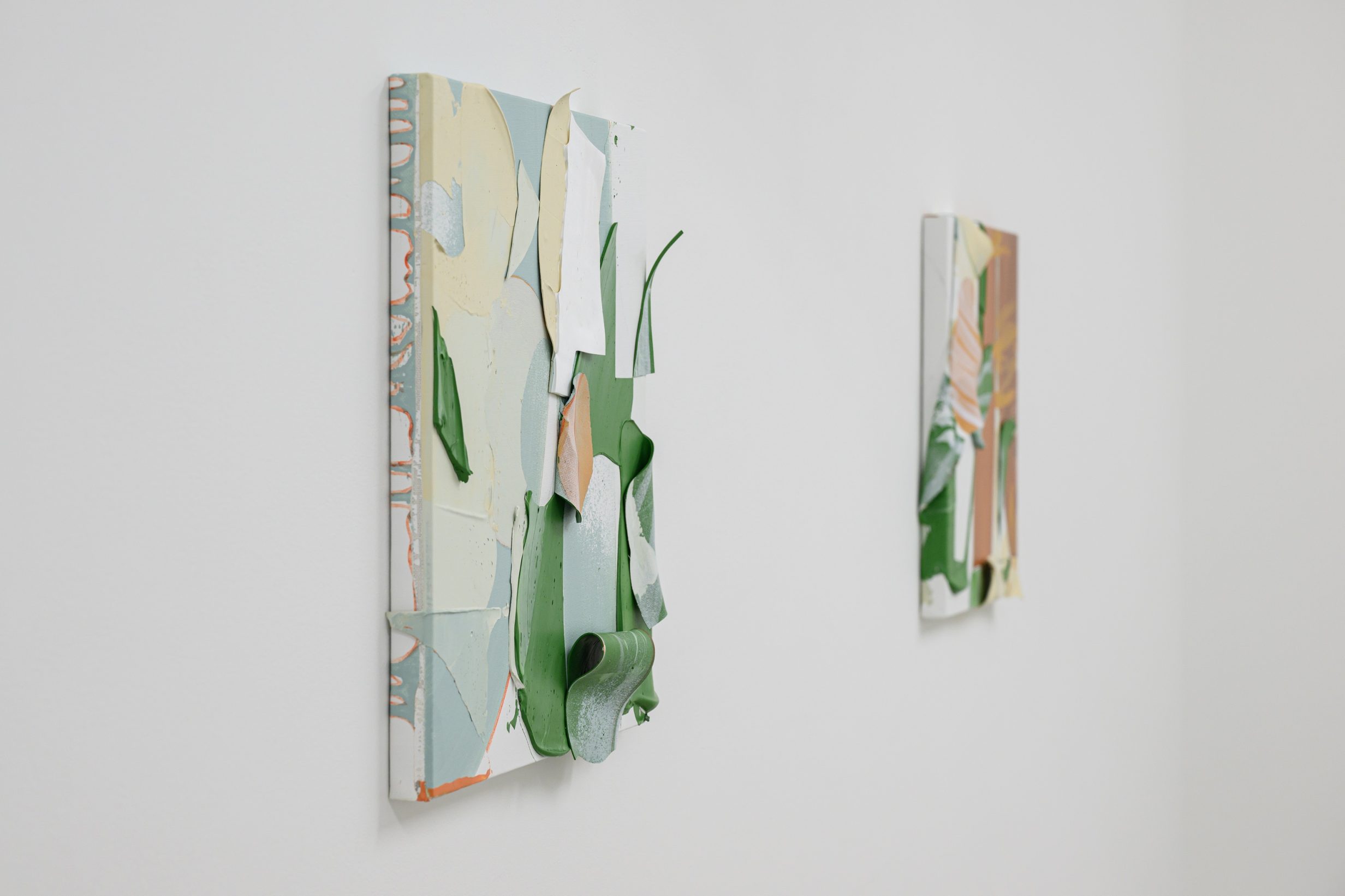
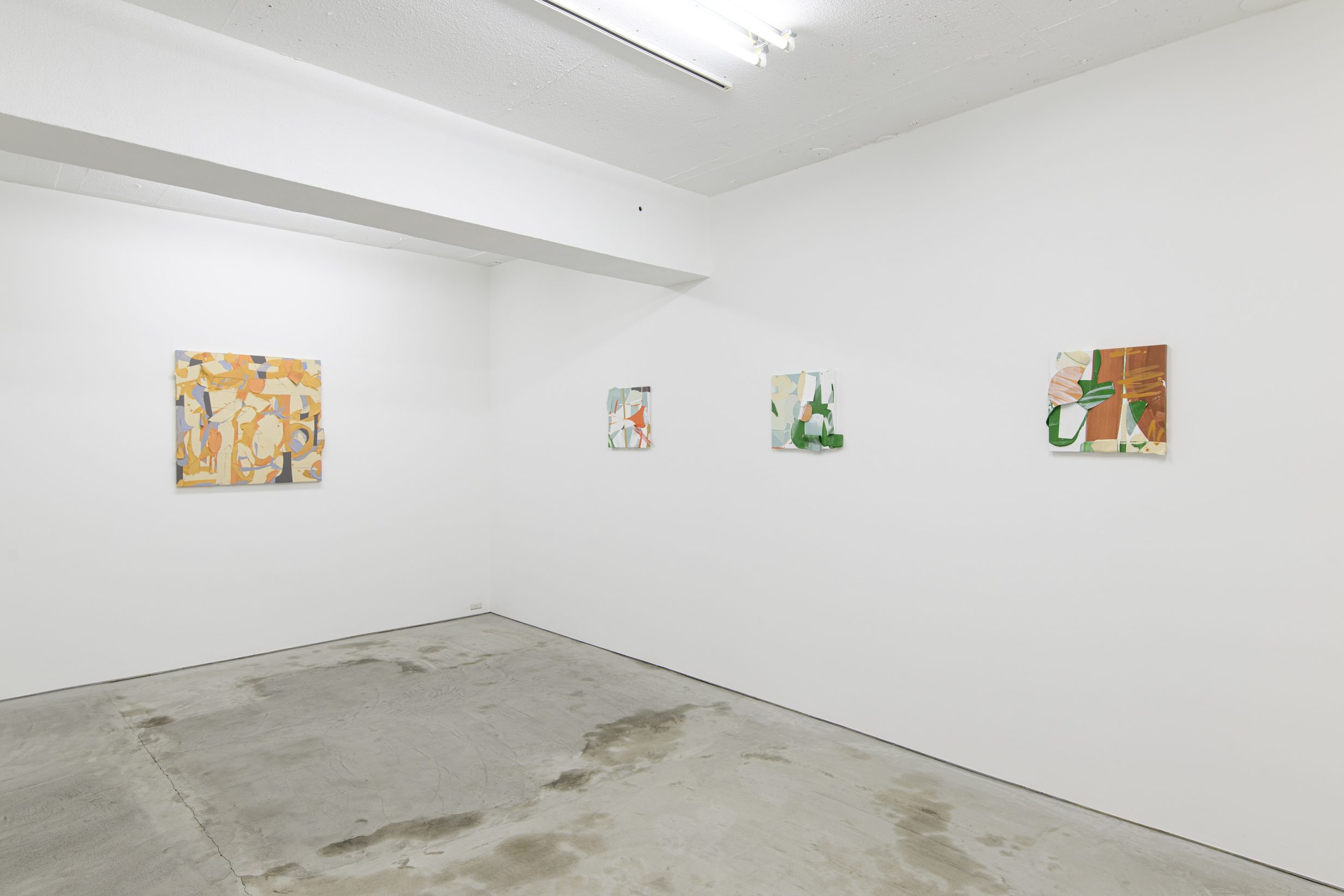
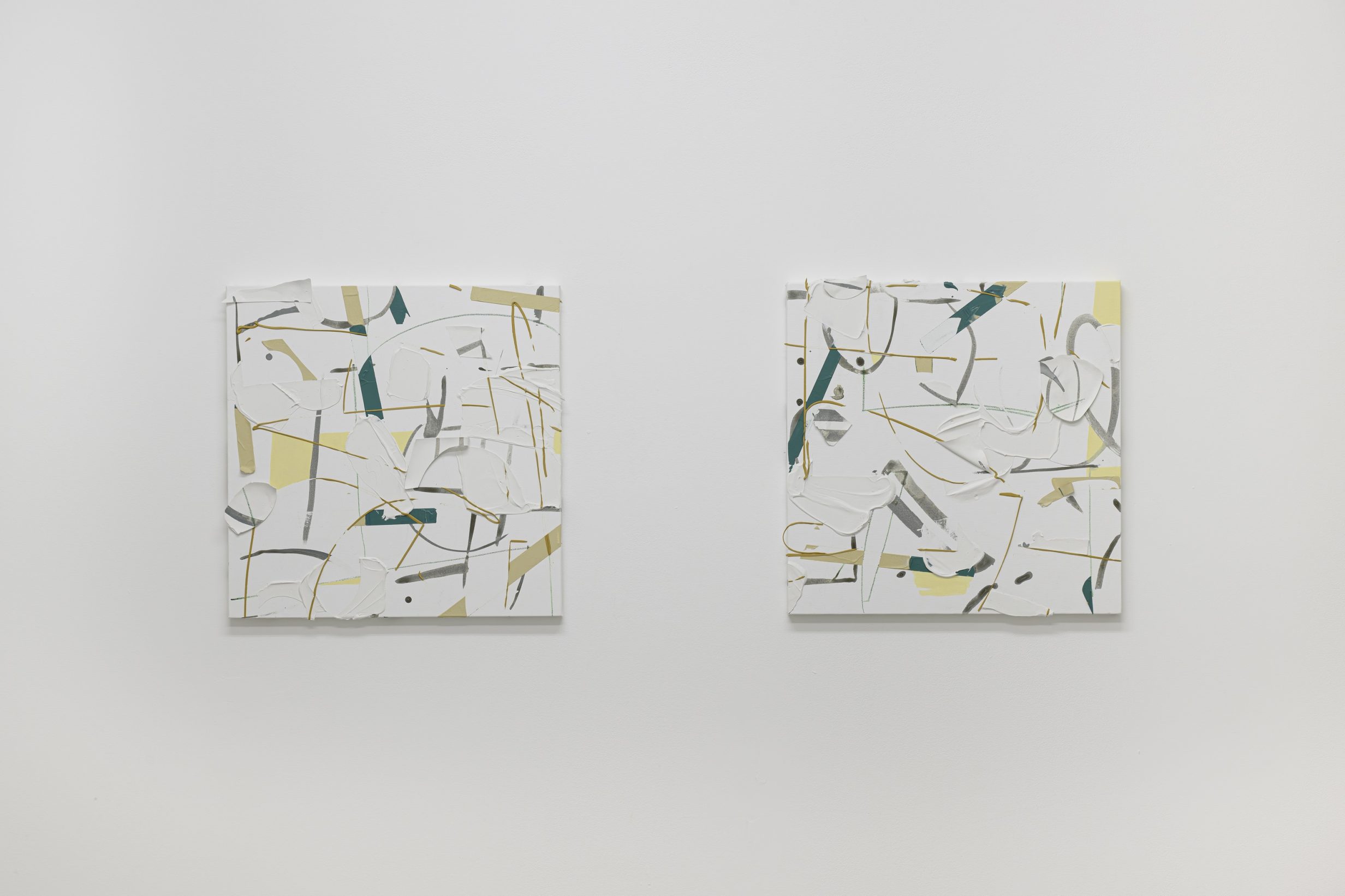
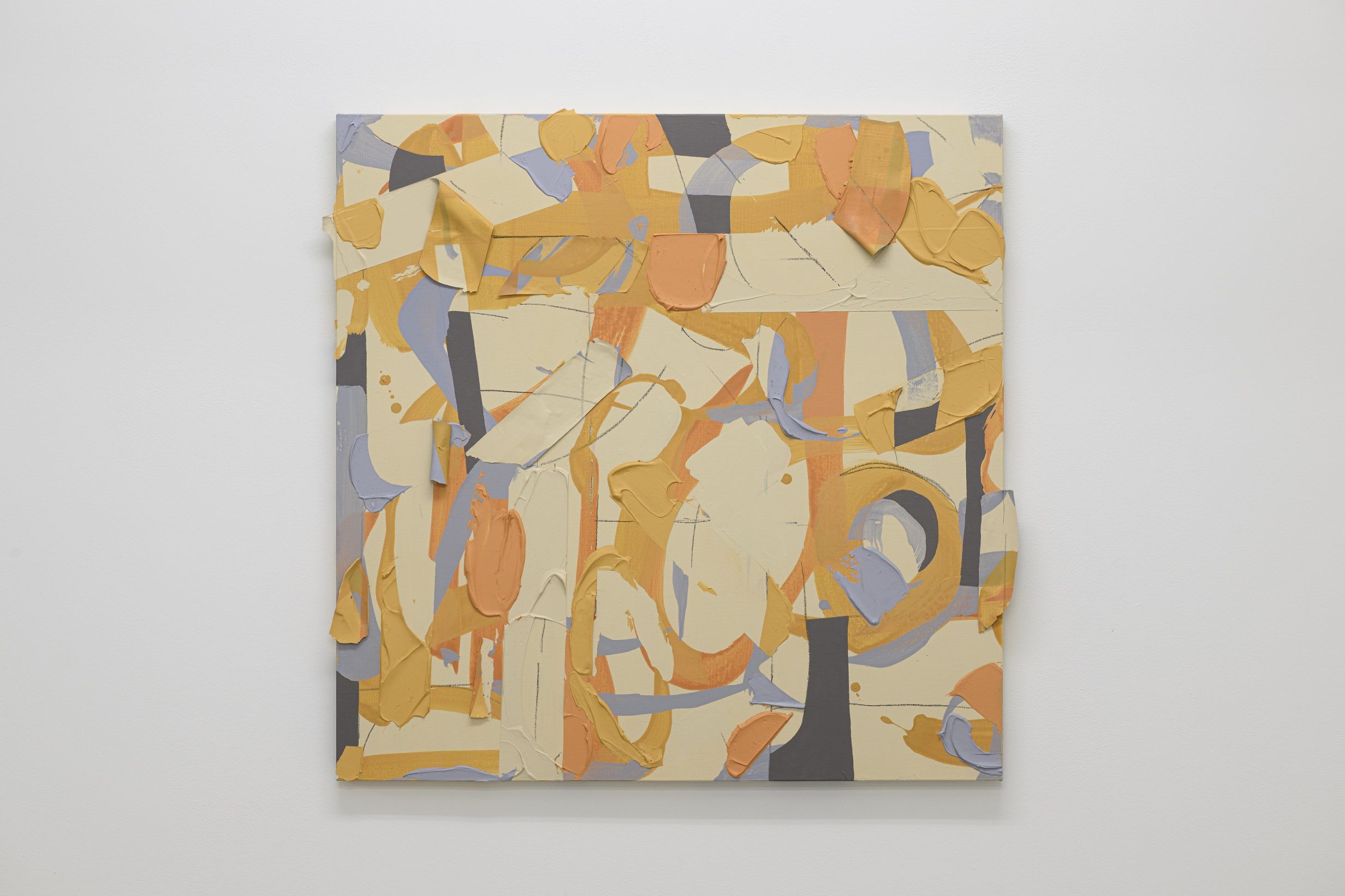
Ordinary objects – Alex Dodge / Shoko Masunaga / Ryosuke Ogino / Fuminao Suenaga
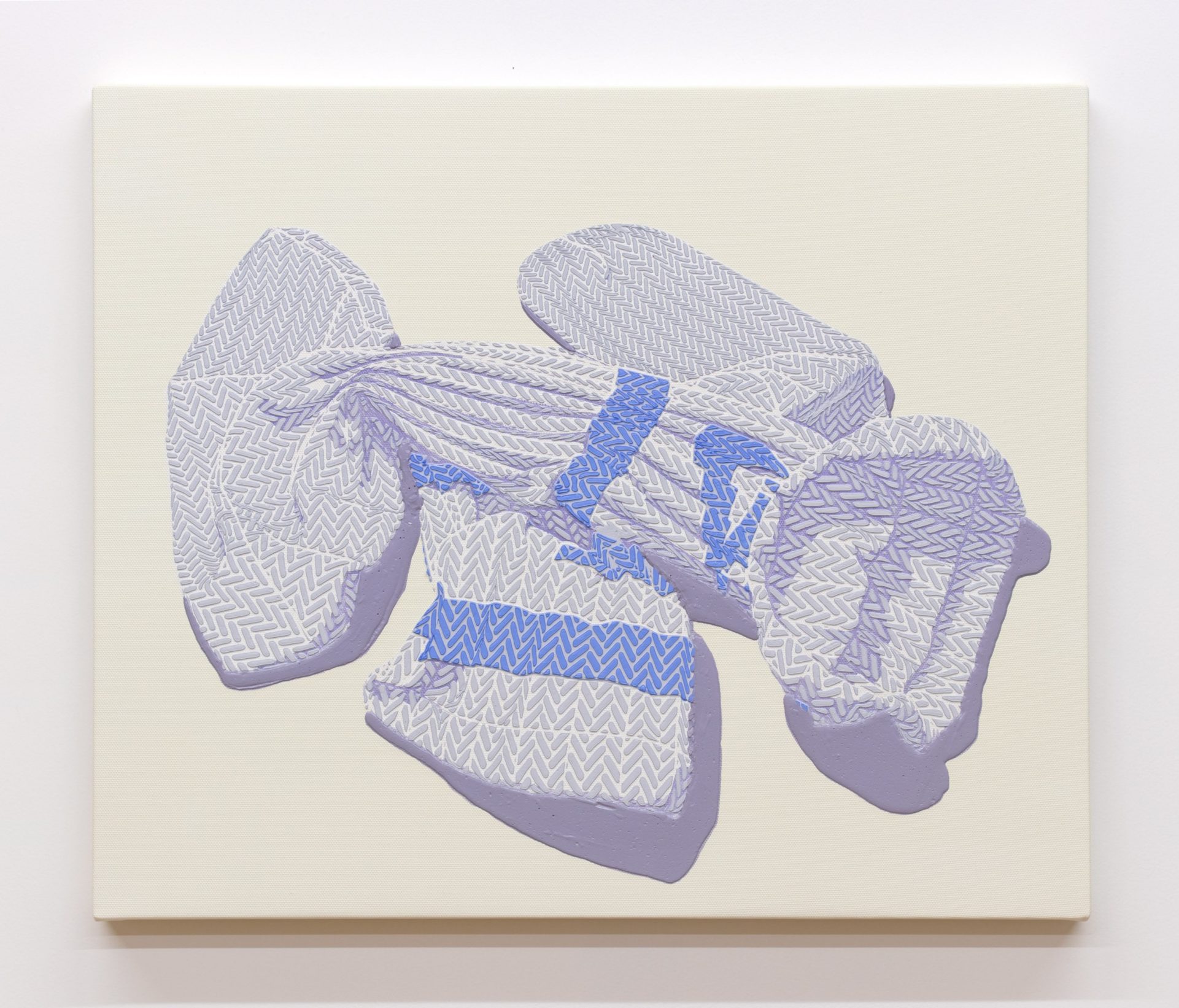
Soft Power for Hard Problems (Nike) I
2020
oil on canvas
38 x 45.5 cm
Maki Fine Arts is pleased to present Ordinary objects, a group show by Alex Dodge, Shoko Masunaga, Ryosuke Ogino, and Fuminao Suenaga, from November 27 through December 20, 2020. The four artists have chosen everyday ordinary objects as subject matter to showcase their unique approach to examining paintings.
Alex Dodge
Born 1977 in Denver, Colorado, Alex Dodge currently works from Brooklyn, New York, and Tokyo, Japan. His recent shows include Alex Dodge (solo, Klaus von Nichtssagend Gallery, 2020); The Trauma of Information (solo, Maki Fine Arts, 2019); Programmed: Rules, Codes, and Choreographies in Art, 1965-2018 (Whitney Museum of American Art, 2018-2019); and Whisper in My Ear and Tell Me Softly (solo, Klaus von Nichtssagend Gallery, 2018). His works have been added to collections at The Museum of Modern Art, Whitney Museum of American Art, The Metropolitan Museum of Art, and Museum of Fine Arts, Boston.
Shoko Masunaga
Born 1980 in Osaka, Japan, Shoko Masunaga graduated from Seian Zokei Junior College in 2000 with a major in painting. Her creative process originates from paintings and utilizes a variety of techniques. By focusing on connections to the surrounding environment and space, her works become fluid and interchangeable. Recent activities include the 2018-2019 NARS Foundation International Residency Program in Brooklyn, New York; Box, Box, Box (solo, Cooler Gallery, New York, 2019); CRITERIUM 93 Shoko Masunaga (solo, Gallery 9, Contemporary Art Gallery, Art Tower Mito, 2018); VOCA–The Vision of Contemporary Art 2017 (The Ueno Royal Museum); RURAN TADD PADAN-PADAN (solo, Gallery yolcha, Osaka, 2016); Platform (solo, LOOP HOLE, Tokyo, 2016); When I came home in the evening (milkyeast, Tokyo, 2016); This arrived in the post (IONIO&ETNA, Tokyo, 2015); Abstract Butter at HAGISO (solo, HAGISO, Tokyo, 2015); Where the three tables stand (Art Center Ongoing, 2015); and Medium Conditions (HAGISO, Tokyo, 2014).
Ryosuke Ogino
Born 1970 in Saitama, Japan, Ryosuke Ogino graduated from the School of Political Science and Economy at Meiji University in 1993 and completed the B-semi Learning System program in 1998. Ogino creates paintings using color layers while examining the relationship between color and form. Recent exhibitions include Absorption / Radiation (the 19th hokuto-building, Saitama, 2019); MOT Collection: Pleased to meet you. New Acquisitions in recent years (Museum of Contemporary Art Tokyo, 2019); Current Location of Paintings (Sapporo Odori 500-m Underground Walkway Gallery, Hokkaido, 2018); (-ness) (solo, Maki Fine Arts, 2018); Hello (solo, See Saw Gallery + Cafe, 2016); kotenten (solo, Switch Point, 2015); Present-Day Paintings: Two-Dimensional Works of Four Artists (Kawagoe City Art Museum, 2015); cannot see clearly (solo, gallery COEXIST-TOKYO, 2014); and New Vision Saitama 4 (The Museum of Modern Art, Saitama, 2011).
Fuminao Suenaga
Born 1974 in Yamagata, Japan, Fuminao Suenaga graduated from Tokyo Zokei University in 1999 with a major in painting. His paintings and three-dimensional works are based on visual subject matters inspired by elements relating to exhibition spaces as well as observations made during day-to-day activities. Recent shows include Picture Frame (solo, Maki Fine Arts, 2020); Publicness of the Art Center (Art Tower Mito, Contemporary Art Gallery, 2019-2020); Weavers of Worlds–A Century of Flux in Japanese Modern/Contemporary Art– (Museum of Contemporary Art Tokyo, 2019); MOT Collection: Pleased to meet you. New Acquisitions in recent years (Museum of Contemporary Art Tokyo, 2019); Search Results (solo, Maki Fine Arts, Tokyo, 2018); railroad siding 2017 (former Tokorozawa city supply center for school meals, Saitama, 2017); APMoA Project ARCH vol. 11 Museum Piece (Aichi Prefecture Museum of Art, 2014); and Born in 1974 (part 1 of a 40th anniversary show, Museum of Modern Art, Gunma, 2014).
Shoko Masunaga – Ginza Curator’s Room#005 Angel’s Perch
October 7 – 21, 2023
Shibunkaku Ginza

